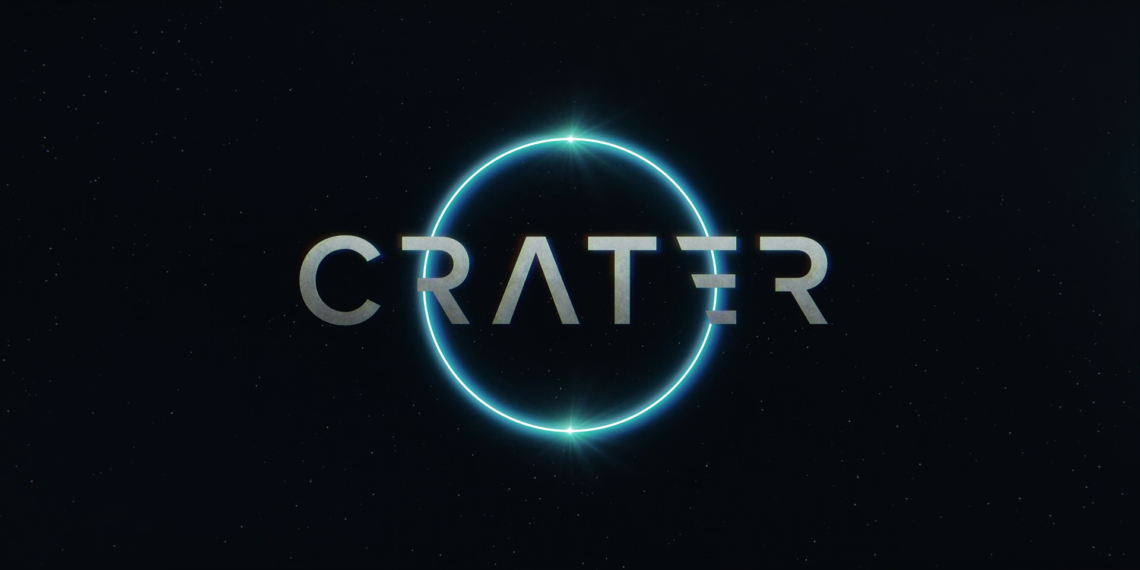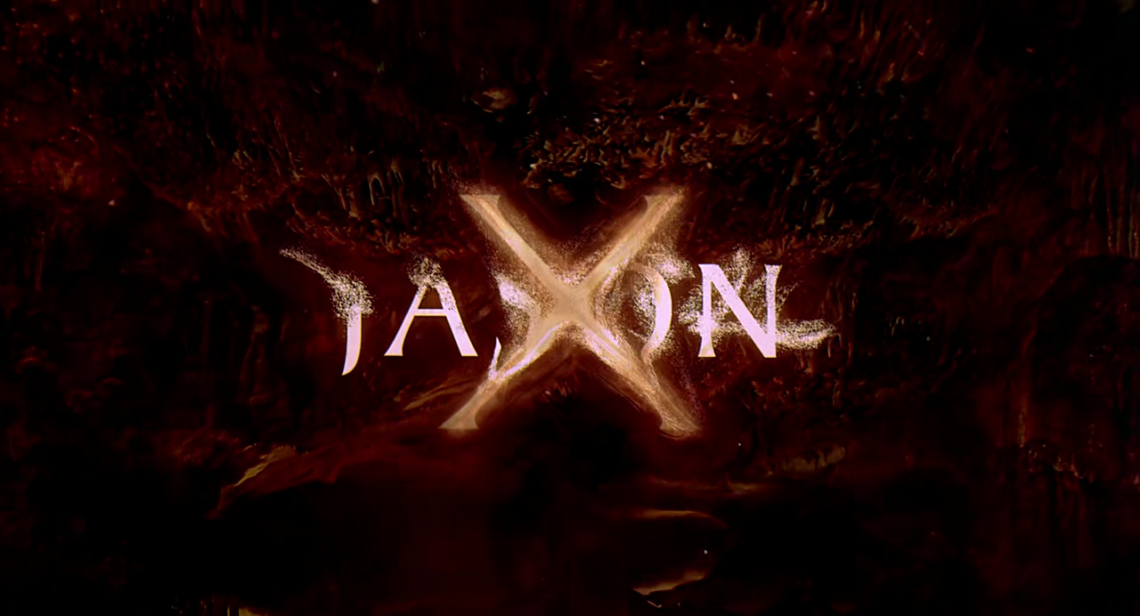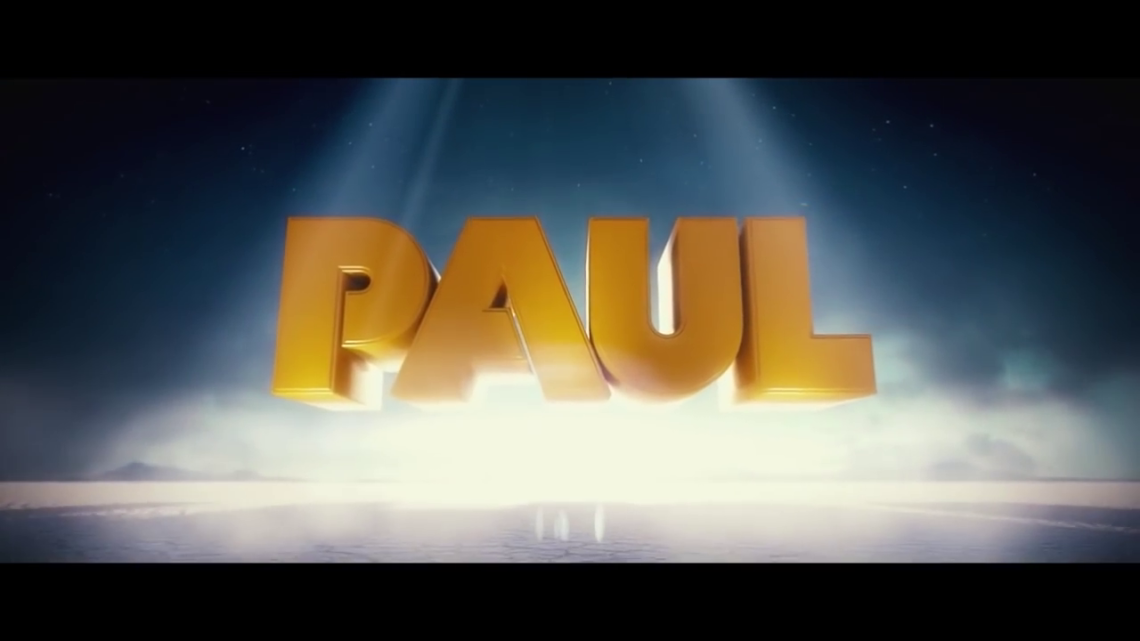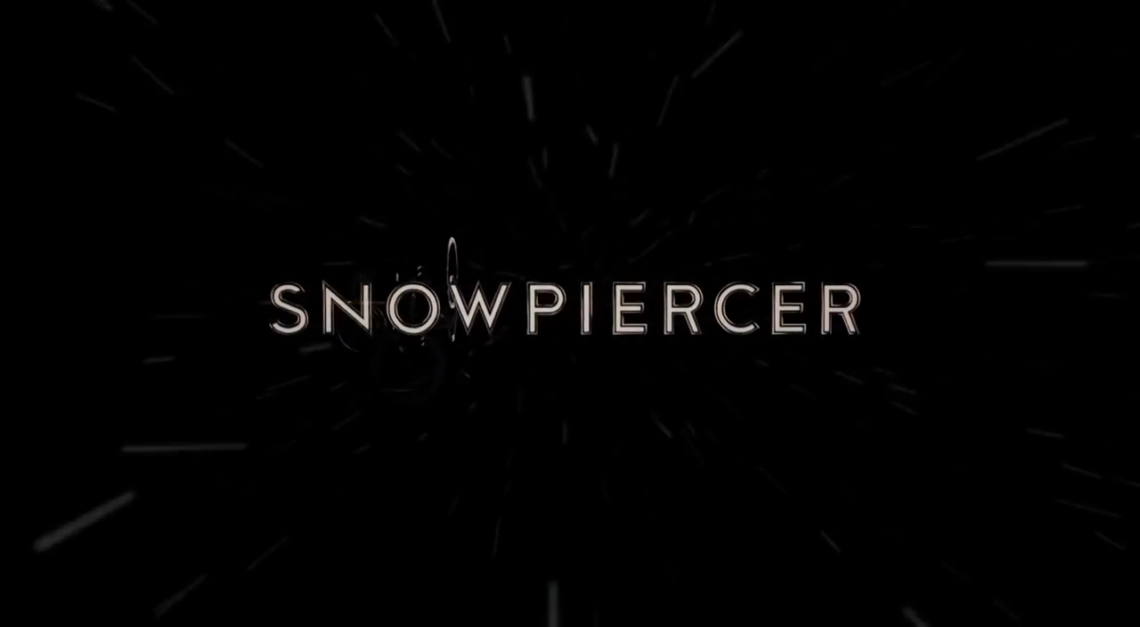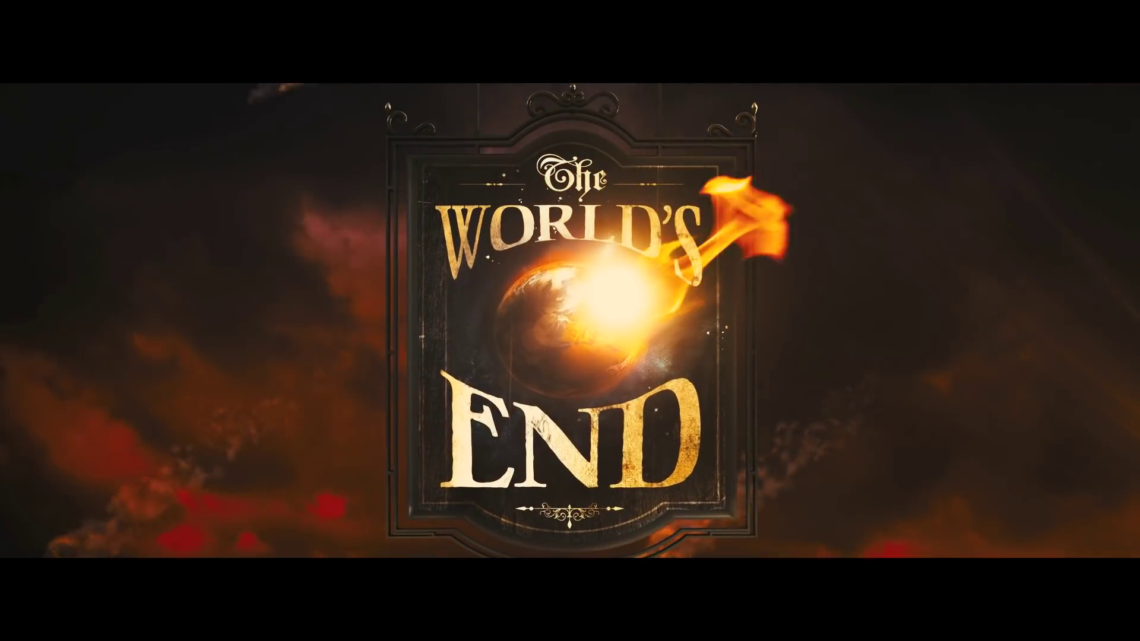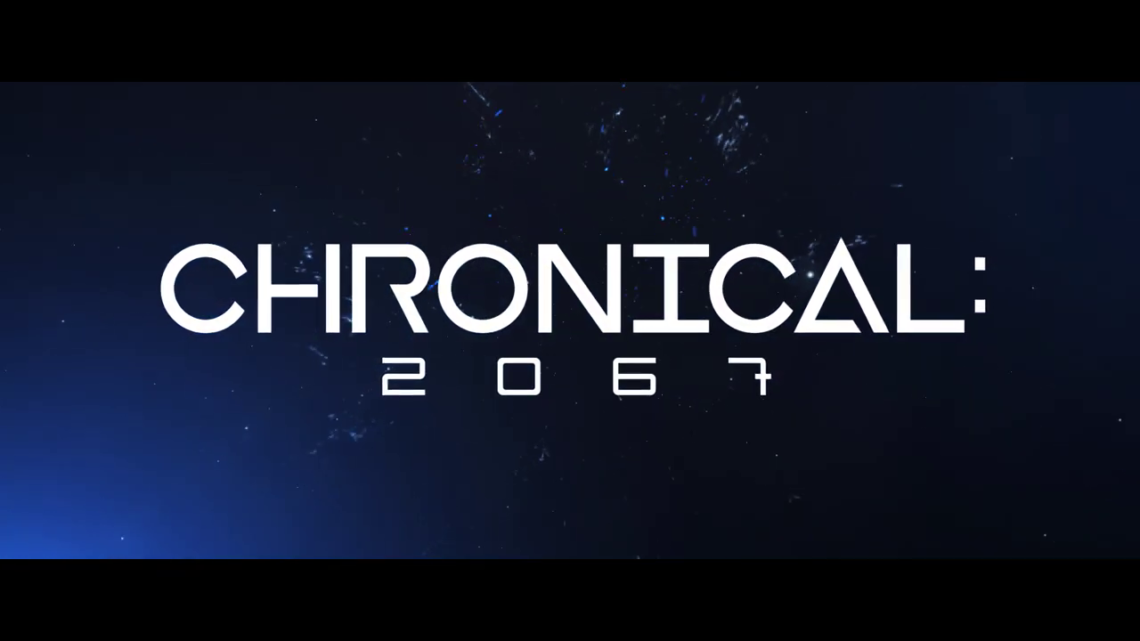-
#573 – Moonfall (2022)
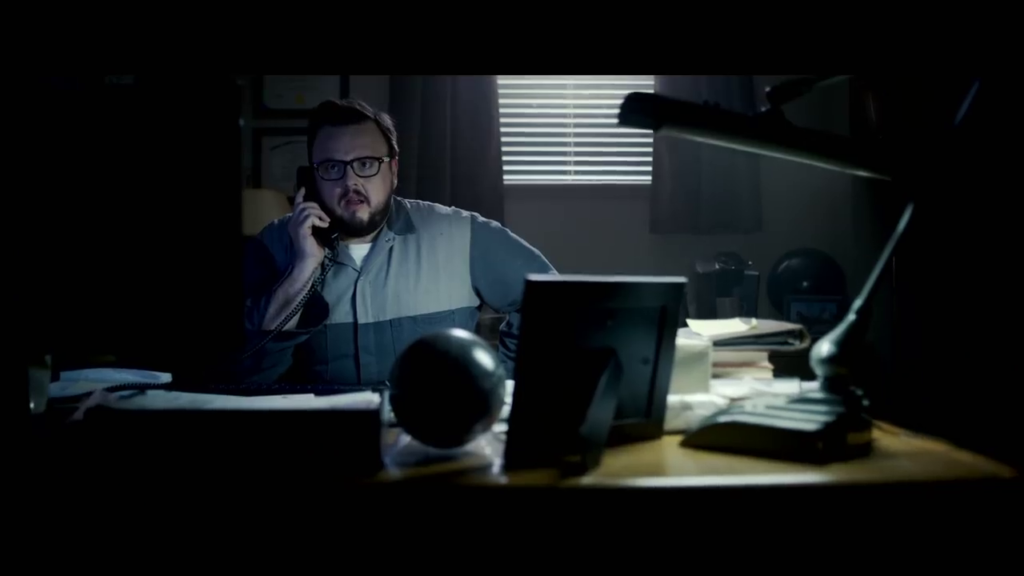
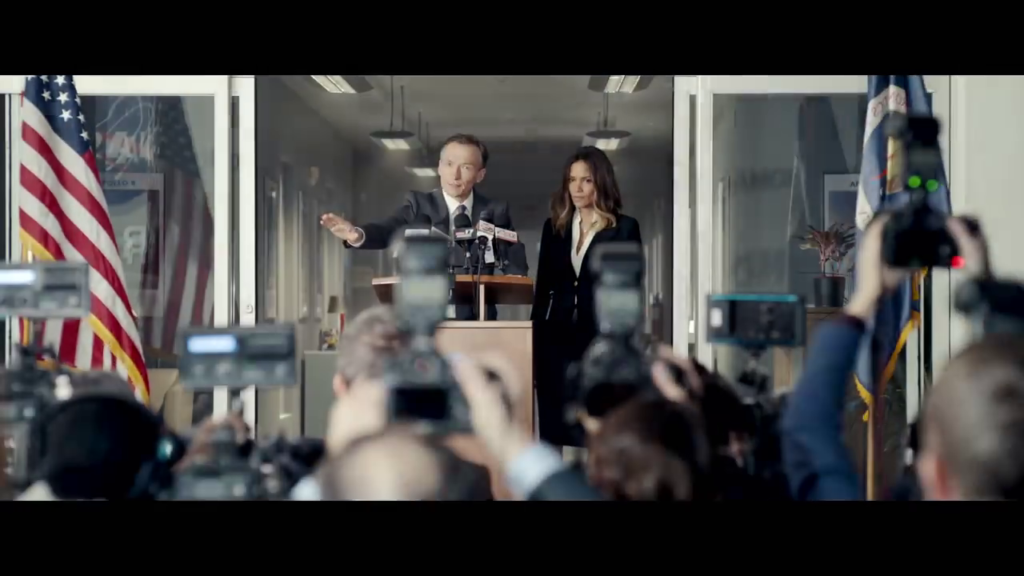
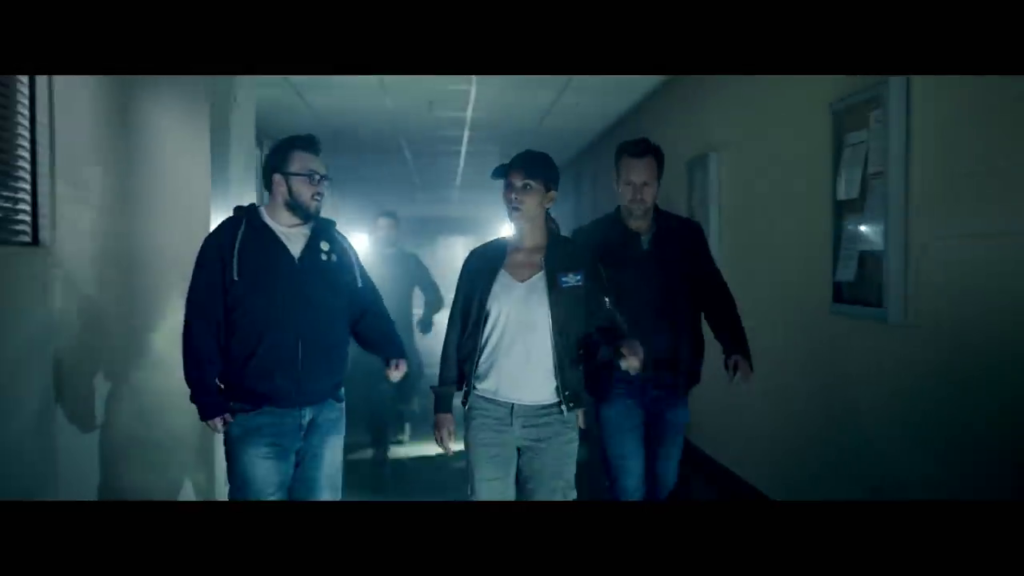
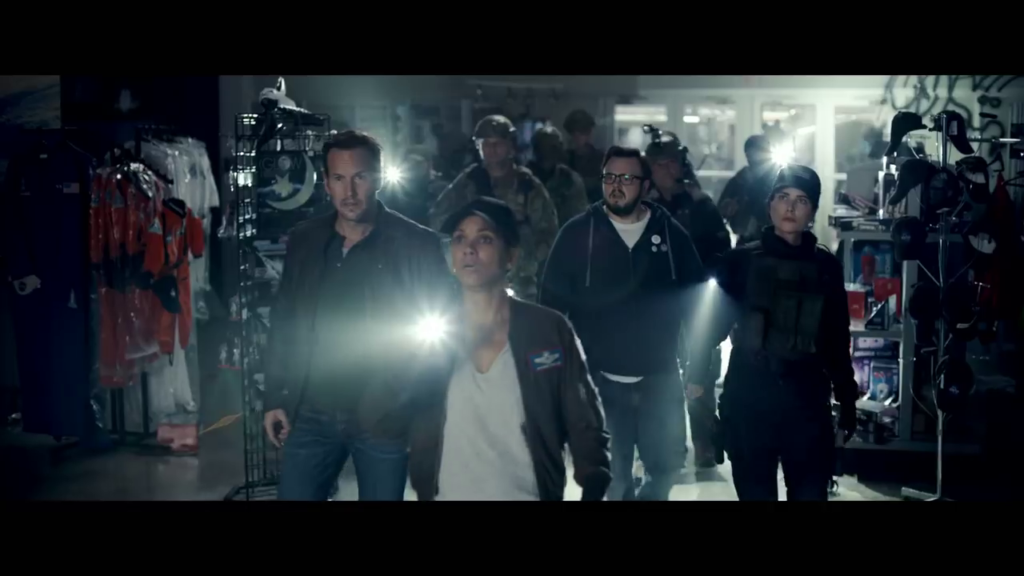
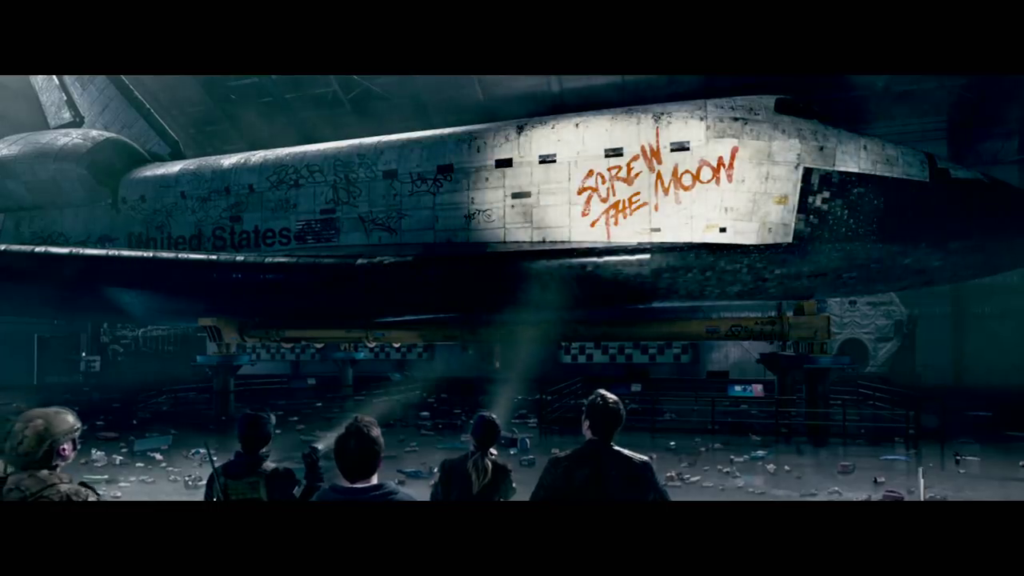
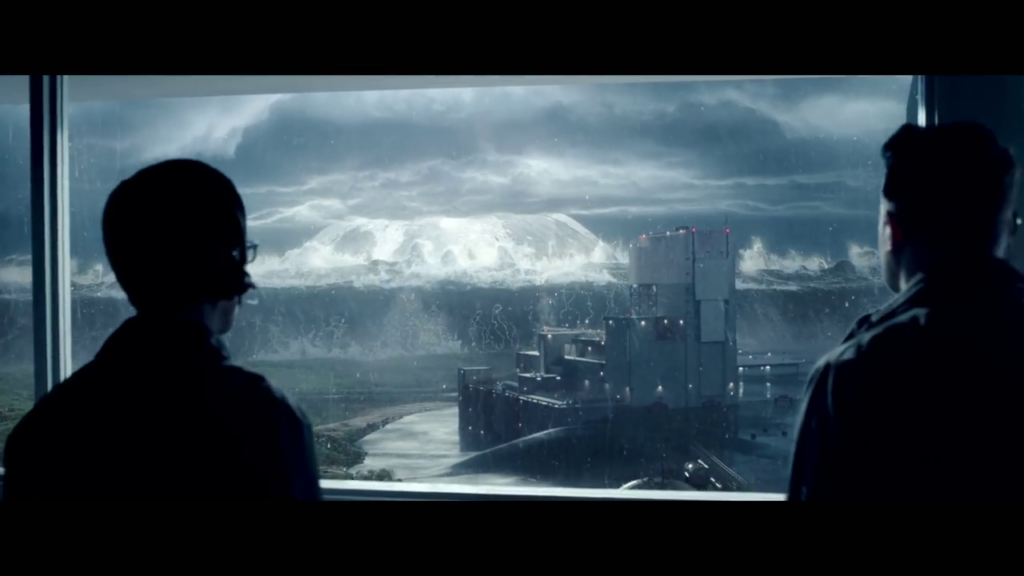
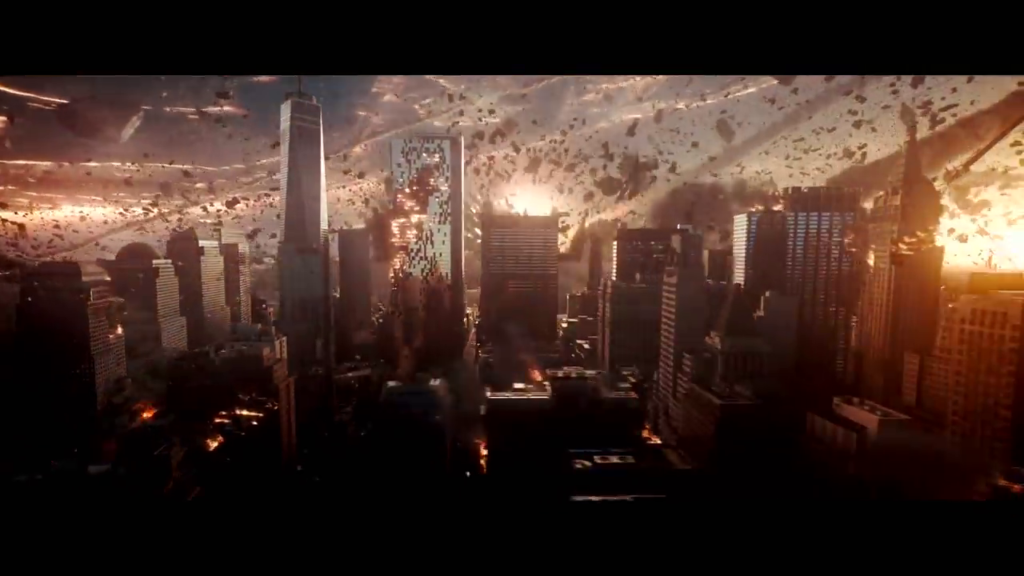
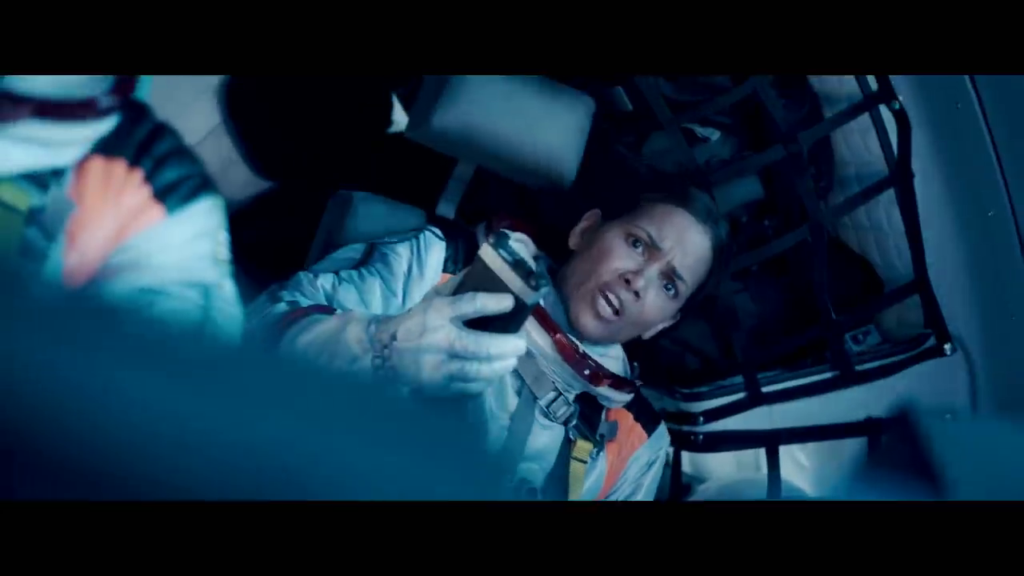
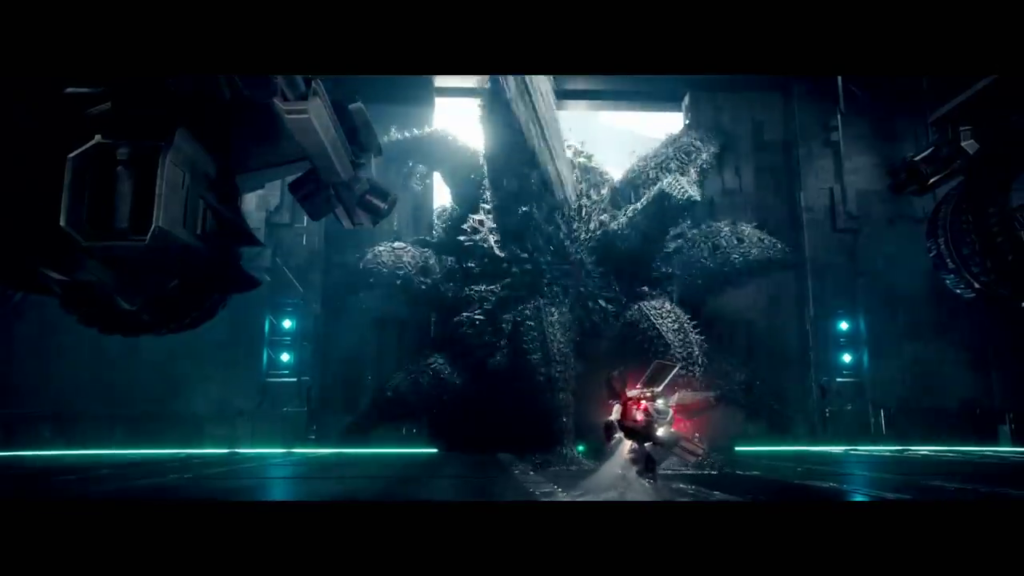

Moonfall (2022)
Film review #573
Director: Roland Emmerich
SYNOPSIS: K.C. Houseman, a conspiracy theorist, uses a research telescope to confirm his suspicions that the moon’s orbit is changing and moving closer to Earth, and will eventually collide with it. NASA eventually confirm the findings and mass panic ensues. They send a rocket up to the moon to investigate, but the shuttle is attacked by a mysterious entity. Brian, an astronaut who was fired in disgrace after a space mission he was on was similarly attacked and no one believed him, leaving his reputation destroyed, is now tasked with one more mission to try and stop the moon from destroying the Earth…
THOUGHTS/ANALYSIS: Moonfall is a 2022 sci-fi disaster film. The plot, unsurprisingly, revolves around the moon falling to Earth. Conspiracy theorist K.C. Houseman, who believes that the moon is a artificial superstructure, and its orbit is decaying. It turns out he is right, and when NASA confirms it, mass panic sets in across the world. A shuttle mission to investigate the moon is attacked by a strange entity, and destroyed. It turns out to be the same entity former astronaut Brian Harper claimed attacked his mission ten years before, but as no one believed him, and was sacked and his reputation tarnished. His former crewmate Jocinda Fowler, who is now deputy director of NASA, recruits him to lead one more mission to the moon to try and correct the moon’s orbit before it collides with the Earth. The film is quite simply a combination of the films Armageddon and Independence Day. In fact, the director Roland Emmerich also directed the latter, so I’m pretty sure it was deliberate. The realism of a disaster film just doesn’t work well with the plot about aliens and rogue AI and whatnot, and a lot of stuff is just skimmed over. A lot of the plot points make very little sense, such as why the A.I….thing would just hide in the moon and try to bring it down, rather than attack the planet directly if that it was aiming to do. There doesn’t feel like there’s much of an attempt for the film to carve out its own identity, rather just picking bits from what previous films have done successfully. Then again, the sheer cheesiness of the plot and setups might make for mindless, entertaining viewing, but it’s definitely hard to take it seriously.
The characters are all fairly cookie-cutter with nothing really distinguishable. Brian and Jocinda are just very standard lead roles, and K.C. Houseman provides the comic relief with one-liners that aren’t memorable or really funny. The trailer for the film has him respond with a quip after every scene or serious moment without rest, and while it’s okay to lighten the mood once in a while, doing this constantly really stops the suspense and story dead in its tracks. The characters also have their own families who are trying to get to safety, providing a perspective from “ordinary” people on the disaster that is unfolding: again, just like Independence Day. None of these characters stand out in particular, and their scenes feel like they’re there to pad out the runtime. With the film coming in over two hours and ten minutes, the film definitely feels padded.
When the mission makes it to the inside of the Moon, they discover the inside is a Dyson Sphere: a man made structure with a white dwarf star housed inside to power it. We are also treated to a lengthy exposition about how humans once existed on another planet but were destroyed by a rogue A.I., so these superstructures were sent to potential habitable planets to populate them with the DNA of human life, but the A.I. thing (I don’t really know what it is) has now found Earth and is causing the moon to fall to destroy the humans. It’s nothing you haven’t heard or seen before, and lumping in all this stuff near the end does detract from the disaster theme a little. The ending feels like it’s very much on auto-pilot, as Brian encounters a “good A.I.” or something, and somehow now knows how to pilot around the superstructure to destroy the bad A.I., which ruins any kind of tension in the climax. In terms of effects and CG, it’s actually not too bad: you get a good sense of the scale of destruction in the landscape shots, but the effects of the Moon’s effect on gravity is entirely inconsistent throughout, and it can mostly be explained away as it’s for the purpose of the plot. Anyway, Moonfall is a mash-up of what you’ve seen before, with Roland Emmerich doing exactly what you expect in producing an over-the-top disaster film with a very typical cast of characters. It’s plot is all over the place, and is completely implausible most of the time. It is a brainless, cheesy sci-fi film that may serve as a silly ride that might entertain, but you’re going to struggle to believe anything in the movie is plausible.
-
#572 – Crater (2023)
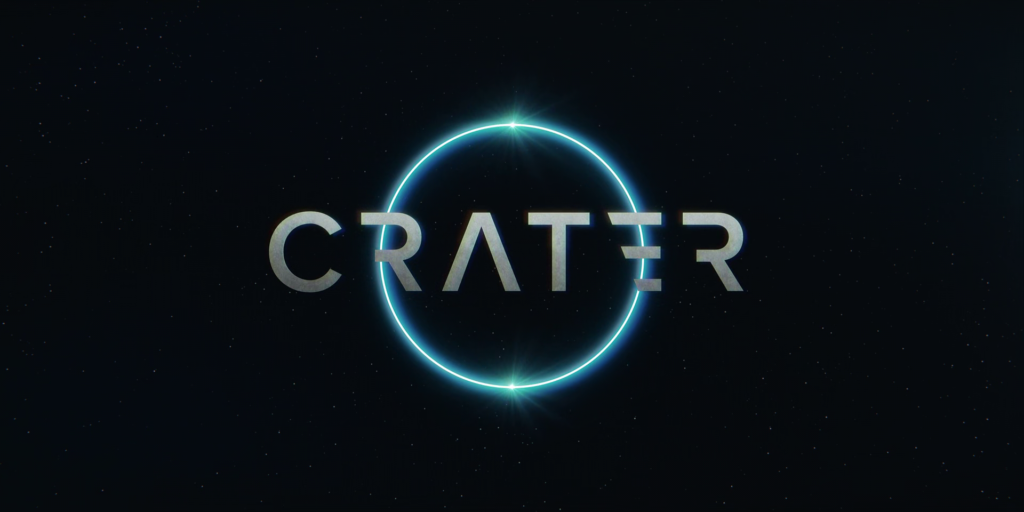
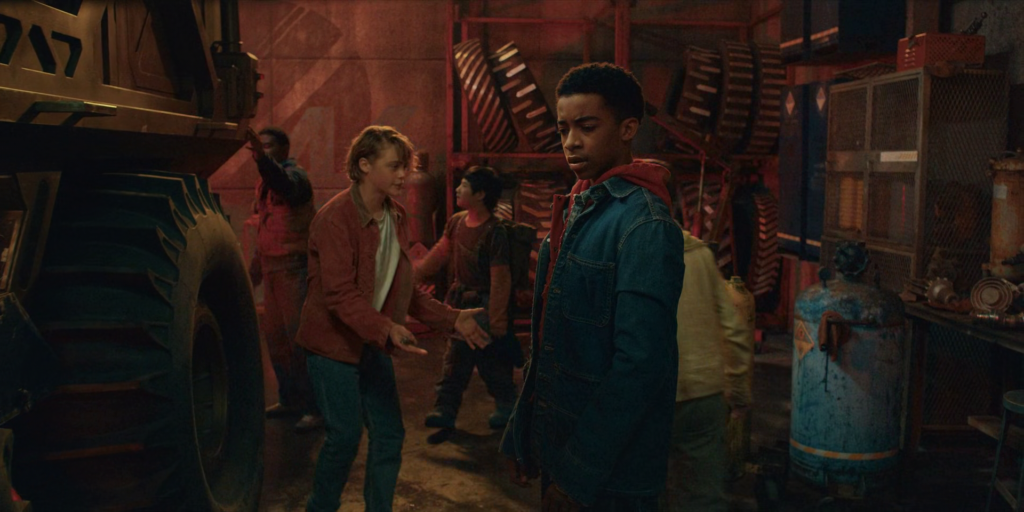
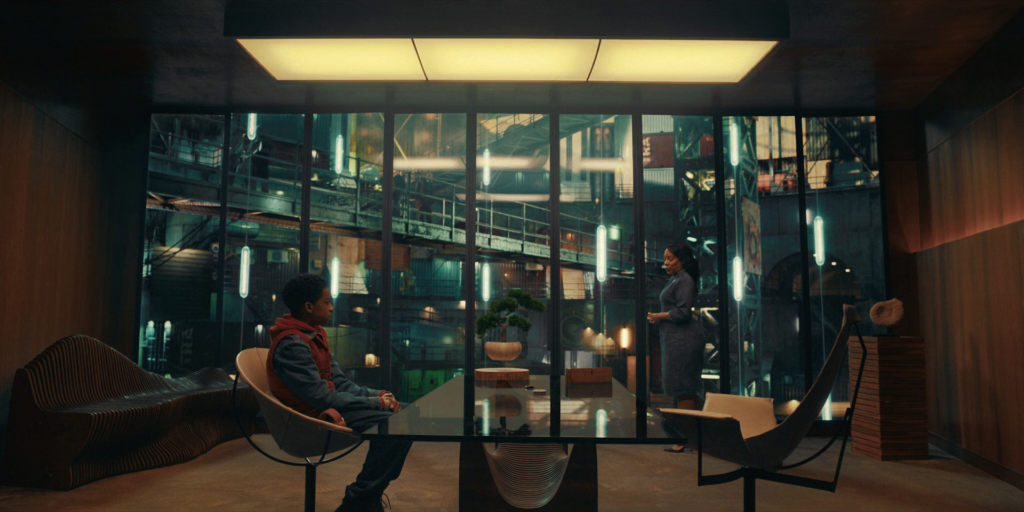
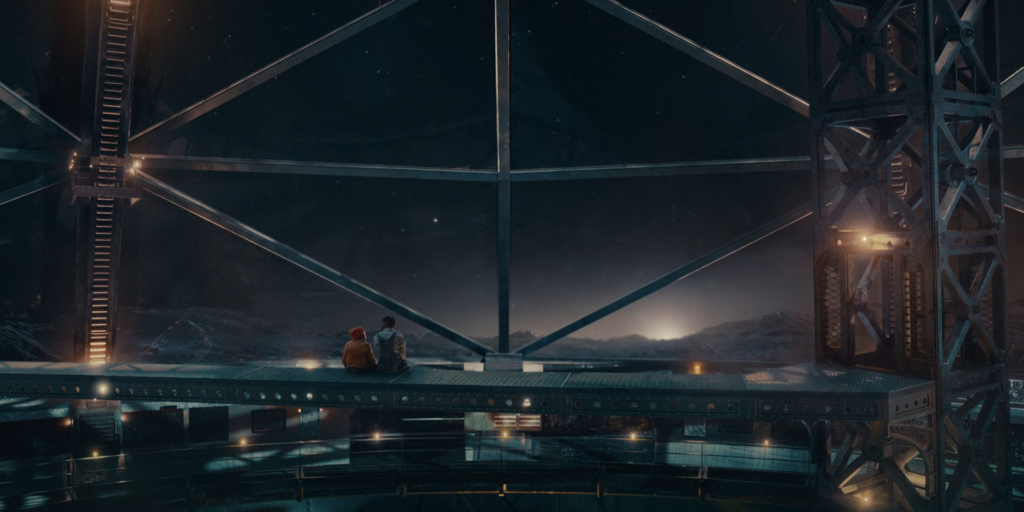
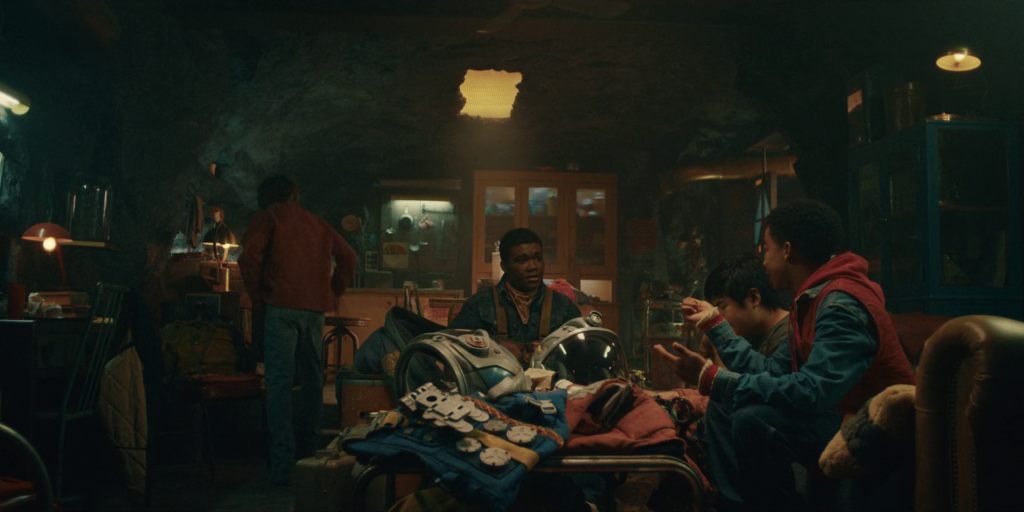
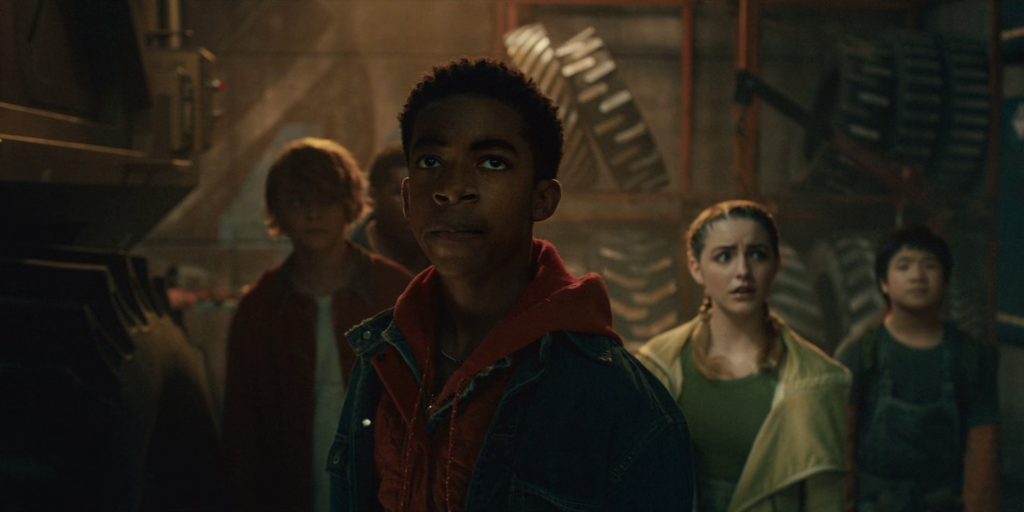
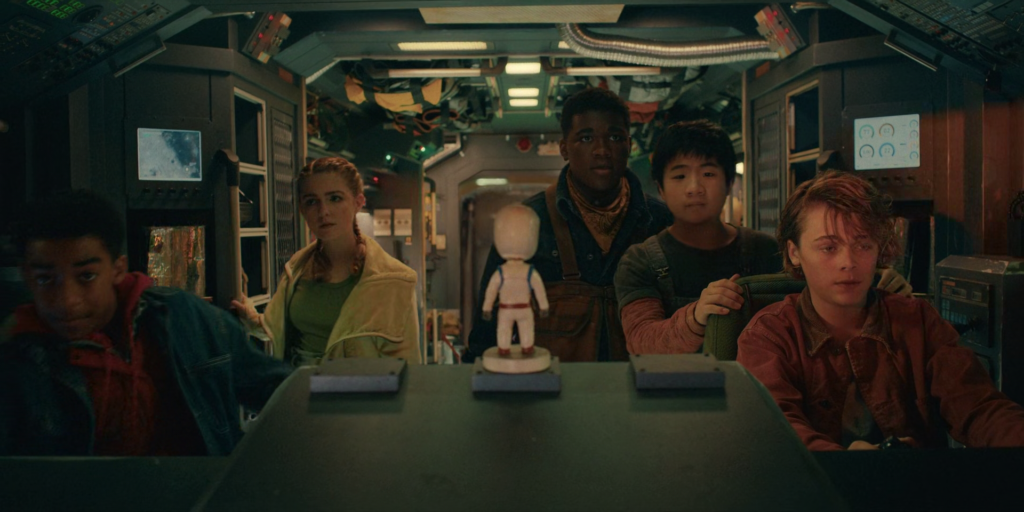
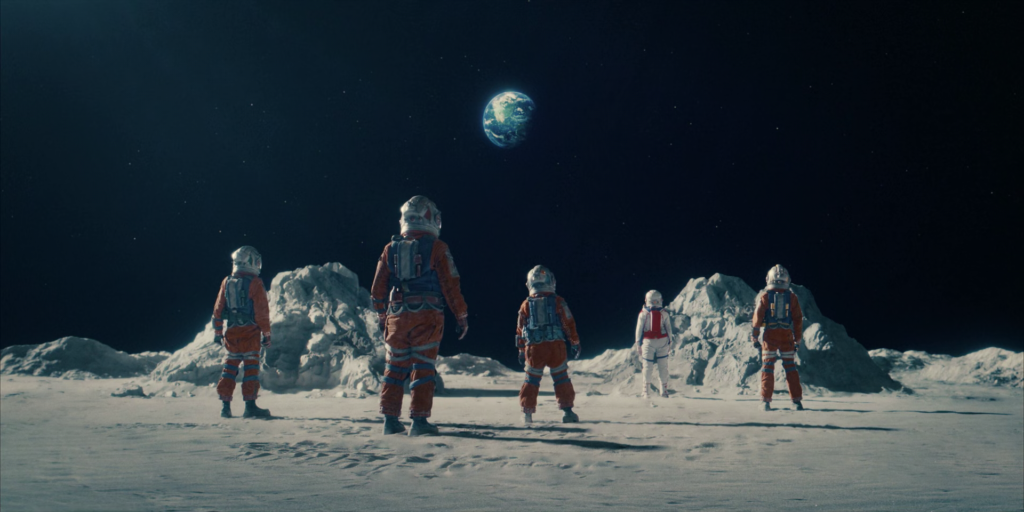
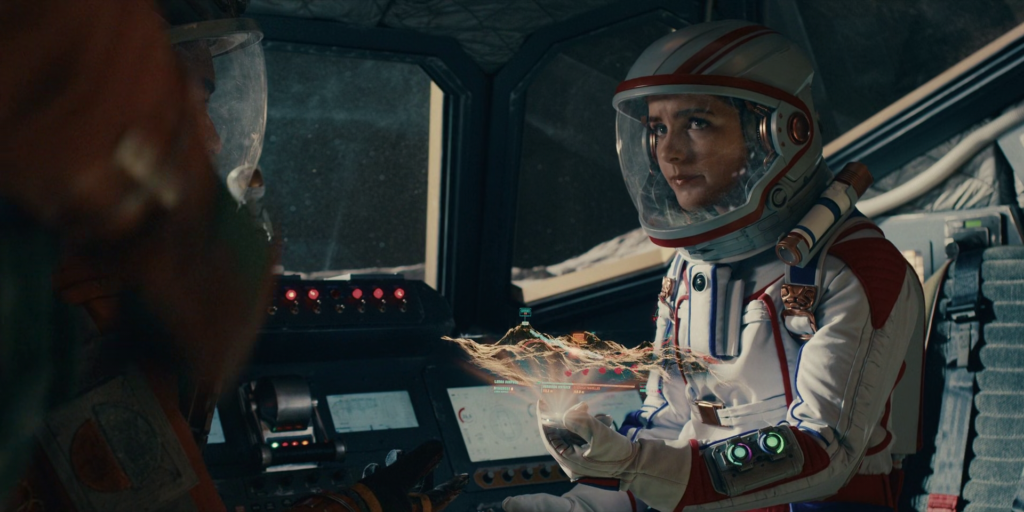
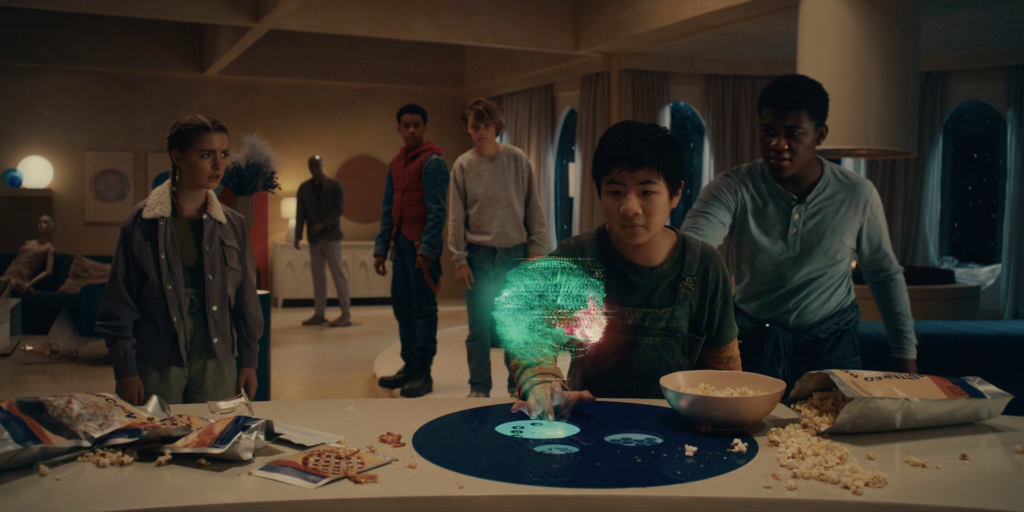
Crater (2023)
Film review #572
Director: Kyle Patrick Alvarez
SYNOPSIS: In a mining colony on the moon, Caleb Channing is about to be shipped to the new colony of Omega, after his Father dies in a mining accident, and he is allowed to go. However, this means leaving his friends behind, which he does not want to do. Caleb also wants to fulfil his Dad’s last wish and go to a crater outside of the colony, so they decide to steal a lunar rover and head out on a road trip across the moon…
THOUGHTS/ANALYSIS: Crater is a 2023 sci-film. The film takes place in 2257 on a mining colony on the Moon, where teenager Caleb Channing is about to be transported to the colony planet Omega, after his Father died in an accident and as a result his family is allowed to take the seventy five year trip in cryostasis to reach the new planet. However, Caleb doesn’t want to go and leave his friends behind. Alongside this, his father told him his dying wish was for him to visit a crater outside of the colony on the lunar surface to see something. To this end, Caleb and his friends plan to steal a lunar rover and travel outside the colony to see the crater before he has to go away forever. The film is a sci-fi twist on the classic teen coming of age adventure, such as The Goonies and Stand by Me. It follows the formula well, and has all the necessary beats to fulfil it’s objective. The sci-fi setting gives it an interesting twist, although at it’s core it focuses on the characters and their adventure: the setting is simple enough to understand and follow, and doesn’t interfere with that. There’s a lot of convenient coincidences that make everything possible, such as a meteor shower happening when they are planning to escape so that means no one can go after them, but you can overlook that for the most part. There’s times where the film feels a bit too on-the-rails for an adventure, as it doesn’t have the capacity to deviate too much from it’s destination (being in a lunar rover, they can’t really just wander off and find anything new on the Moon), and the flashback narration from Caleb’s dad sometimes is a bit overbearing in hammering home what this trip is supposed to be does seem to be a bit counterproductive in celebrating these kid’s freedom, but is not a huge problem, and the film stands on it’s own for the most part.
The cast of Caleb and his friends are diverse and interesting enough, and give strong performances throughout, which creates a good connection between the characters. Each of them has their own issues and outlooks that bring something to the trip, and there’s some conflict between the characters, but it’s very minimal. We don’t learn everything about the characters, and that’s fine, because we’re just enjoying this journey with them. There’s a message about environmentalism and worker’s rights that runs throughout the film, but it keeps it subtle, letting it play off a little more in the finale when the journey is over. The ending is a jump, but one that doesn’t diminish or write off the impact of what it does, and gives just enough to keep things hopeful.
The film looks pretty good, with a consistent sci-fi aesthetic that feels used and worn, without it looking too cheap or hokey. The CG isn’t top notch, but again, that’s just a small thing you can overlook. All in all, Crater is a decent adventure that takes it’s subject matter seriously, although this might be a bit too serious for it’s target audience. The adventure is fun and easy to follow, the performances are pretty good, and while there are some issues with the film, they are mostly easily overlooked, and don’t detract from the experience.
-
#571 – Jason X (2001)
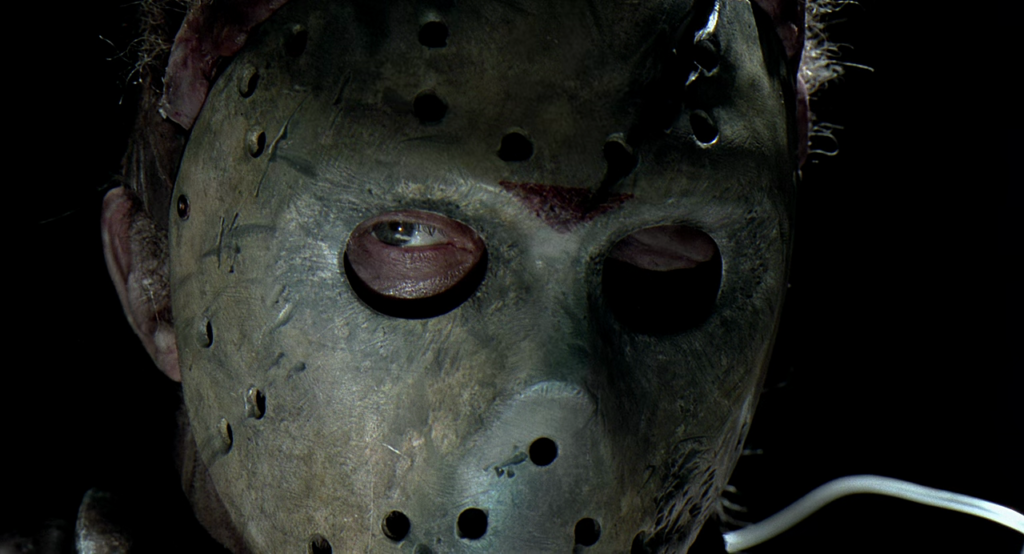
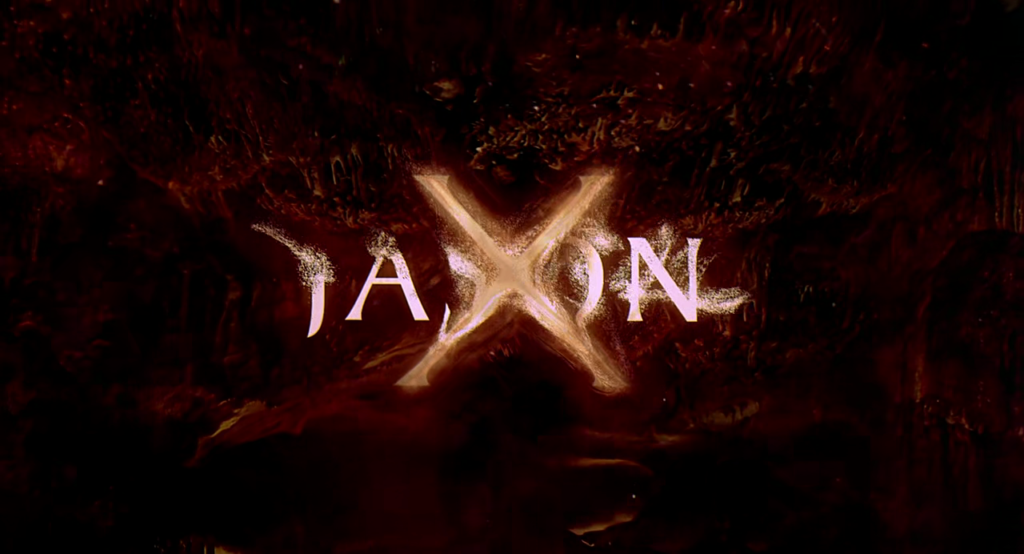
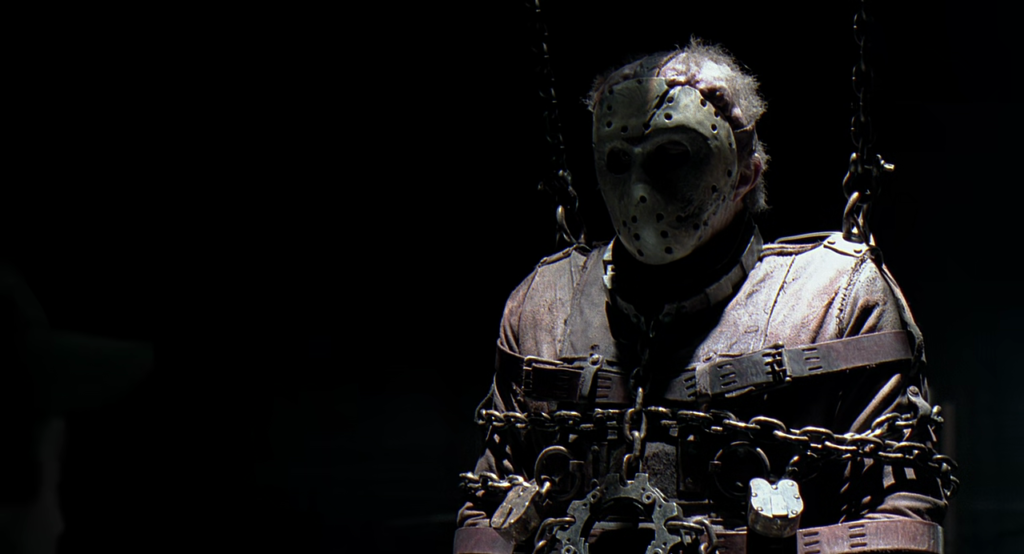
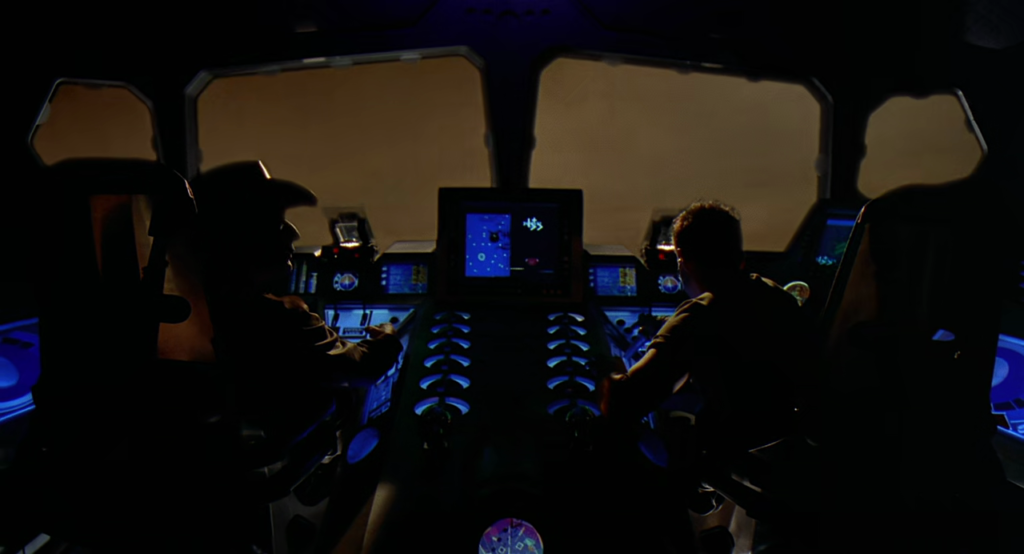
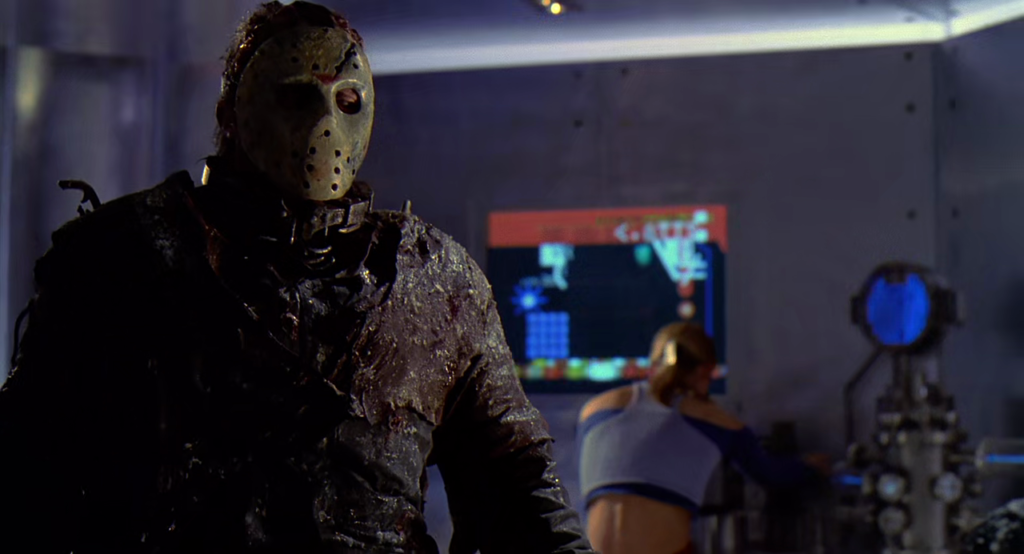
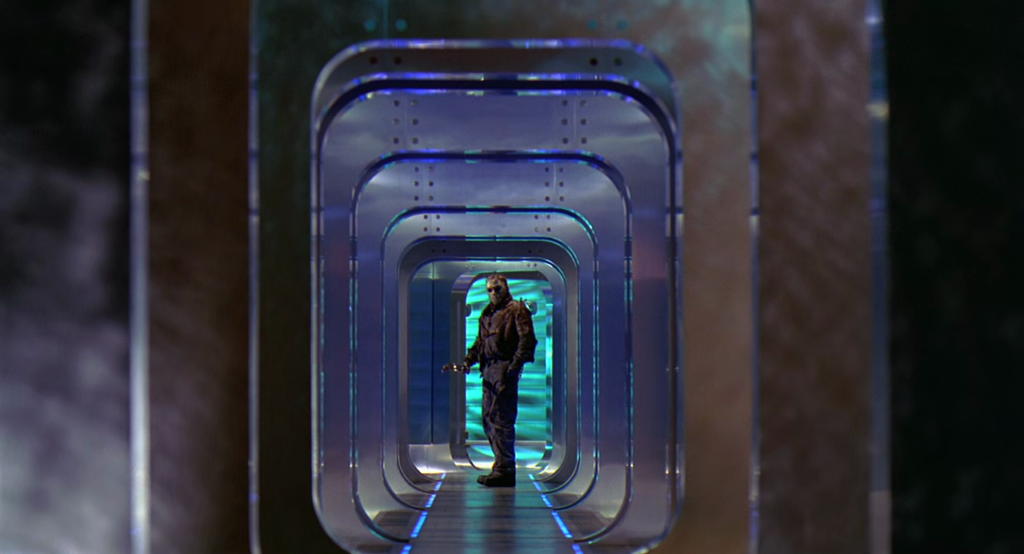
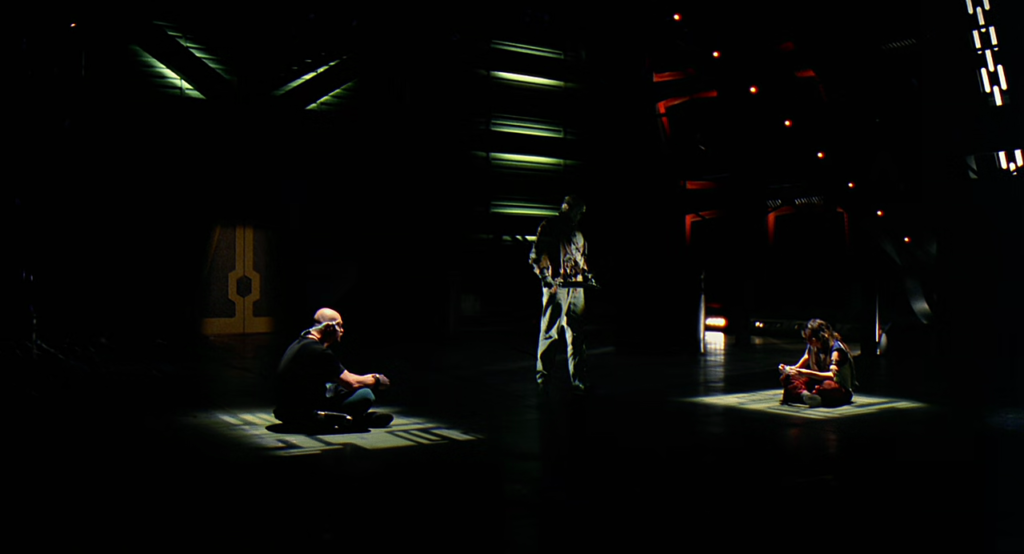
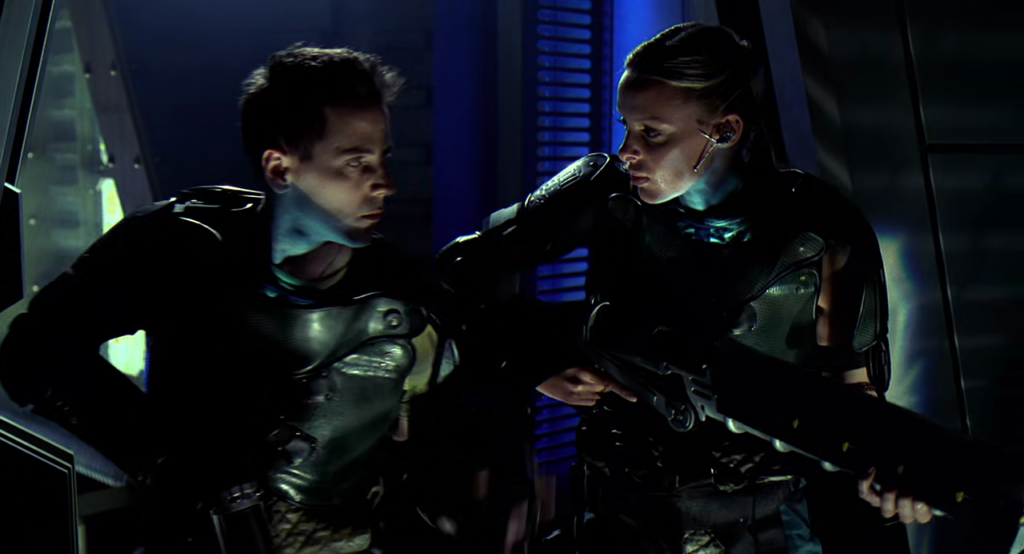
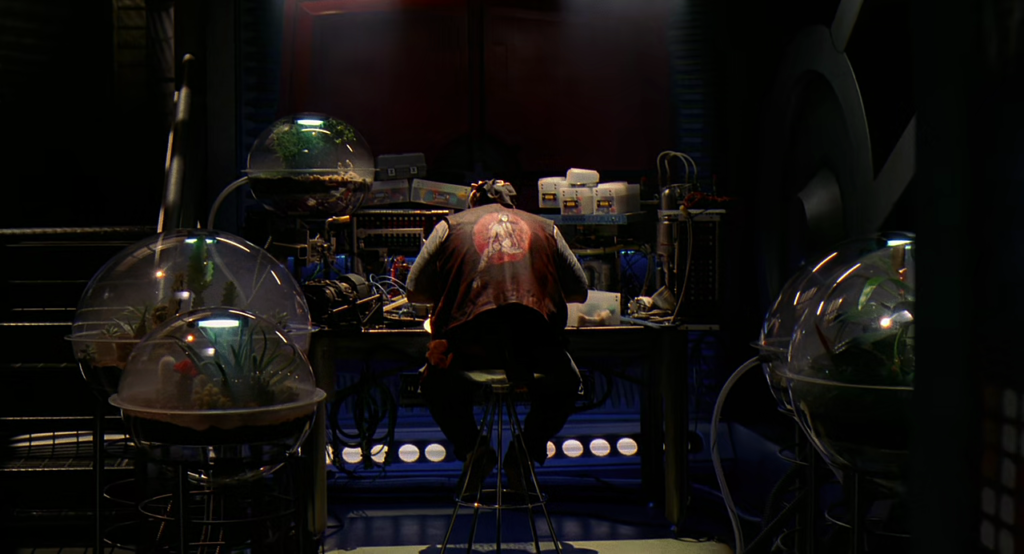
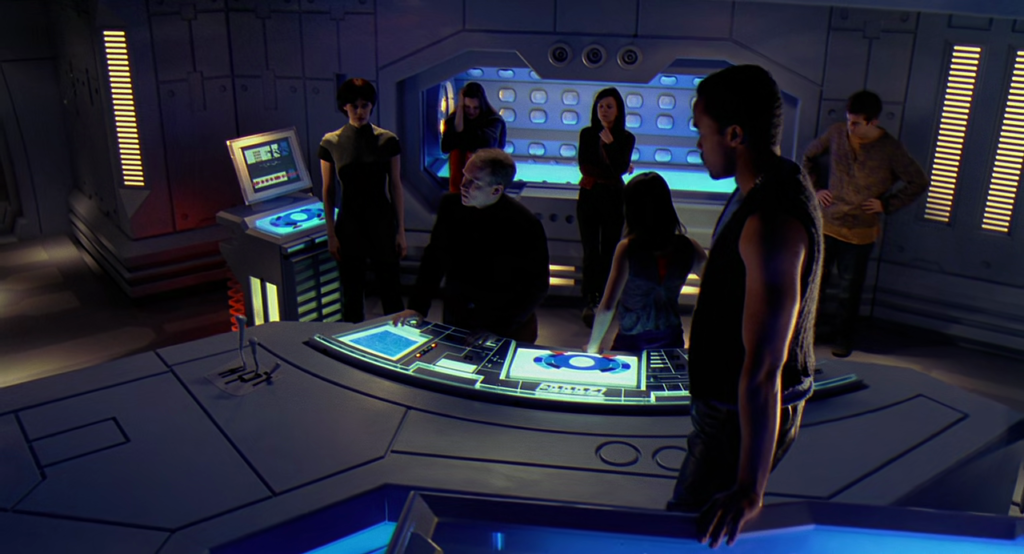
Jason X (2001)
Film review #571
Director: Jim Isaac
SYNOPSIS: Serial killer Jason Voorhees is being held in a top secret underground facility. Orders are given to move him out for study, but the facility’s director, Rowan, believes he is too dangerous to move. Jason manages to break out anyway, and is only stopped when Rowan traps him in cryogenic storage, and unwittingly, herself too. Rowan awakes in the year 2455 on board a spaceship orbiting the Earth, but the people who brought her to the ship also brought Jason too, and he has thawed and ready to kill…
THOUGHTS/ANALYSIS: Jason X is a 2001 film and the tenth film in the Friday the 13th film franchise. The film opens up showing Jason Voorhees being contained in a secret research facility, as previous attempts to kill him have failed thanks to his ability to regenerate. The director of the facility, Rowan, is given orders to transfer Jason out of the facility for study, but she believes Jason is too dangerous to transfer, and wants to cryogenically freeze him. It doesn’t matter anyway, as Jason breaks free of his confines and gets busy cutting through everyone he sees. Rowan manages to lure him into the cryogenic chamber and freeze him, but an accident means she is sealed in and frozen too. Over four hundred years later, Rowan (and Jason) is discovered and brought aboard a spaceship to be revived. Not realising that they have brought aboard a relentless killing machine, Jason picks up where he left off and goes about slaughtering the crew, while the survivors try and work out a way to stop him. The film is about what you’d expect from a slasher film, as Jason mows down people constantly without any rhyme or reason. The sci-fi twist to the typical Friday the 13th film could have two outcomes: it offers a fresh take on the formula, or it can be a travesty of messing with a tried and tested formula that shows a series has run out of ideas. In this case, it is certainly the latter. The sci-fi setting is barely explained: humans have moved to a new planet called Earth II because Earth has become too polluted, but this is mentioned about once. We don’t know anything about this future, and what technologies exist, and not knowing what is possible just leaves things very confusing as if the film makes it up as it goes along. It feels like the film just doesn’t try to take advantage of it’s new setting, and just sticks to filling the film with sex scenes, partial nudity, and slashing without really giving anything new to offer.
I’m not really sure what the film wants to do: it’s obviously not meant to be a really gritty horror film, as there’s no real suspense, overly visceral gore, or jump scares, and as mentioned, just falls back on randy young people having sex to appeal to it’s young adult audience. There’s no creativity with the kills (maybe one or two) or anything unique about them that the setting gives them. I feel like it would probably be easier to stop Jason on a spaceship, as there’s nowhere to really hide, doors can be secured pretty easily, you could lure him out an airlock and wouldn’t have to confront him at all. But I suppose that wouldn’t make an interesting film. I’m not even sure the film wants to be taken seriously. It does try to inject some comedy by having the characters say really awkward puns and quips, but they are all just so oddly timed and out of place that it’s baffling what you’re supposed to take away from the film.
There’s quite a large cast of characters, most of whom you’ll never get to know because Jason kills them off fairly quickly. You can tell right from the off what cliché character they are meant to be. There’s no real development in any of the characters, even the lead, Rowan, just doesn’t have any personality, and we have absolutely no idea about who she is and any details about her life. Jason is more or less the same as he has always been, which is good, but the “Cyber Jason” that emerges when Jason’s body is repaired by the cyber nanobot…things isn’t going to become the new Jason: he just becomes a cyborg which is pretty silly and over-the-top, but again, that might be what the film is going for?
The setting of the spaceship has a fair amount of detail, but the CGI is fairly dire. I don’t think it would have been good even in 2001. The whole film just feels like an episode of a TV series, from the sci-fi corridors which could have easily come from an episode of Star Trek, to the threadbare plot that would have fit neatly into a forty minute episode: the film itself barely stretches over the ninety minute mark. Overall, Jason X just seems like a bit of a mess: it doesn’t have the suspense, jump scares, or gore to make it a decent horror movie, but it’s attempts to be funny and poke fun at the franchise, whether deliberate or not, are never delivered at the right time, and your often left wondering just what the aim and tone of this film is meant to be.
-
#570 – Tank Girl (1995)

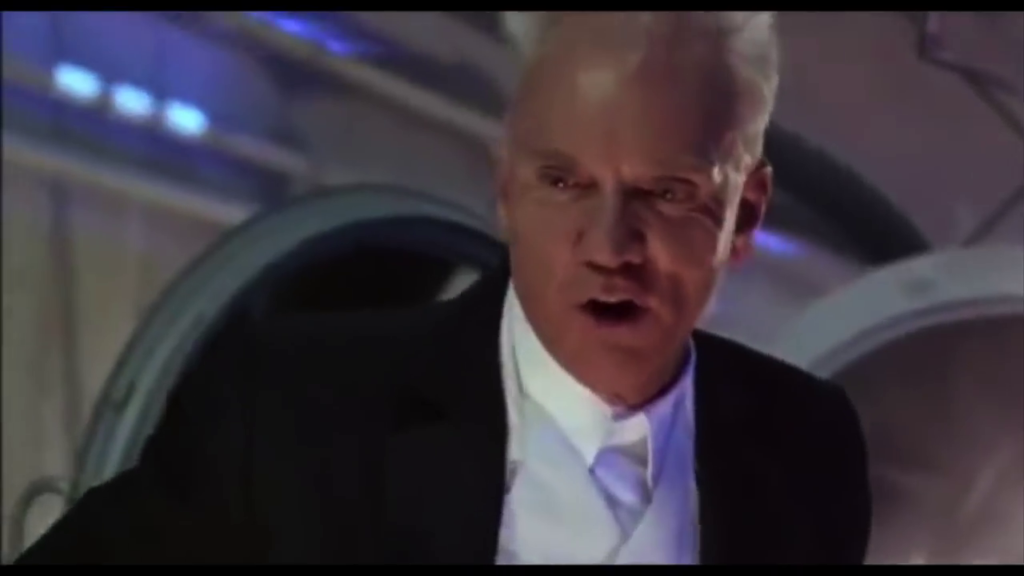
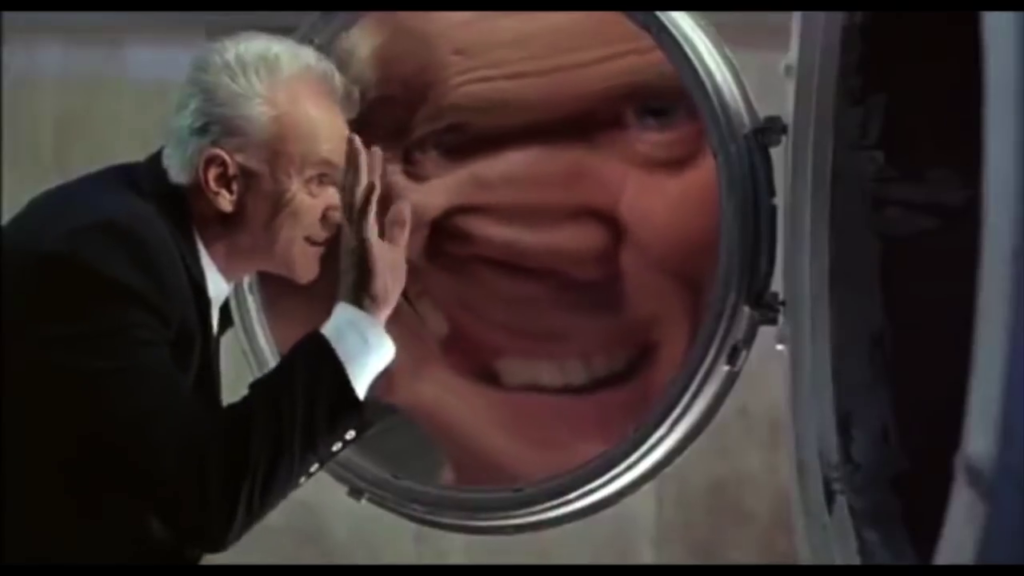
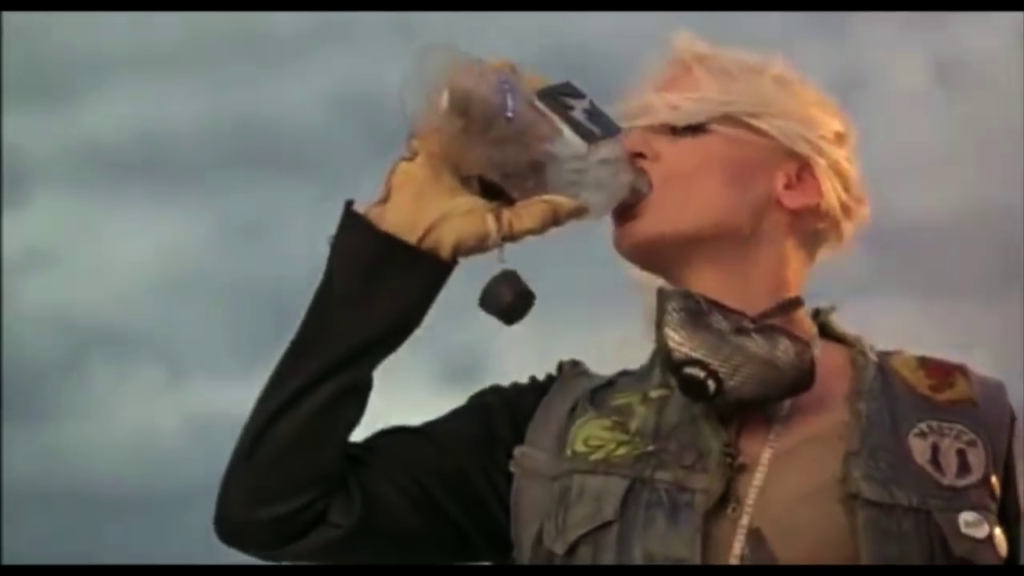
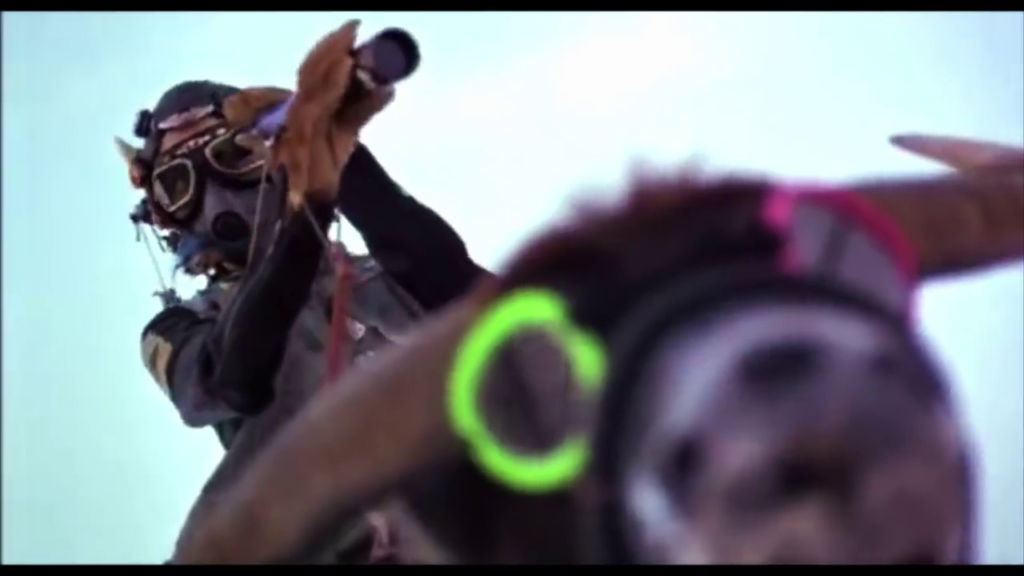
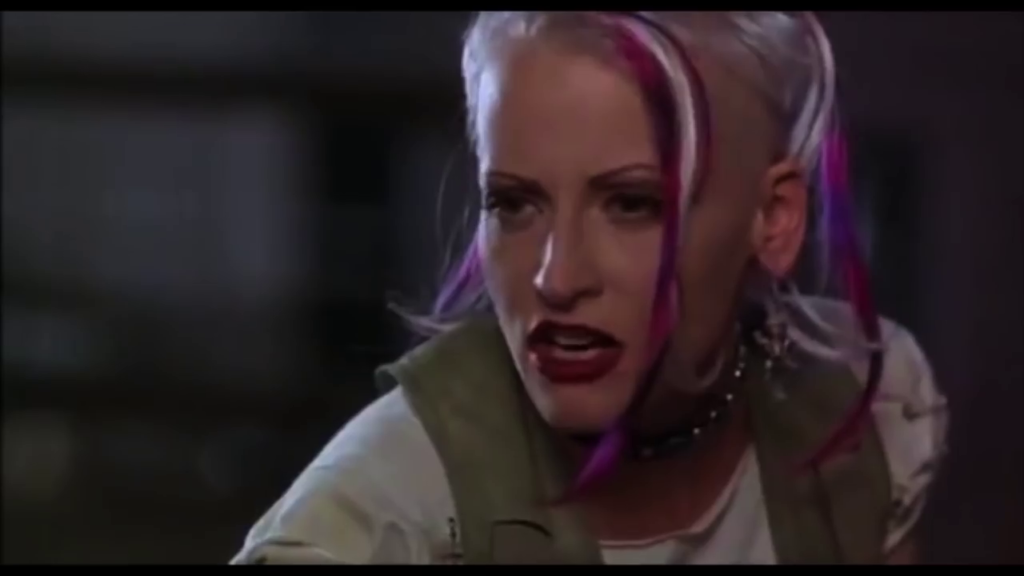
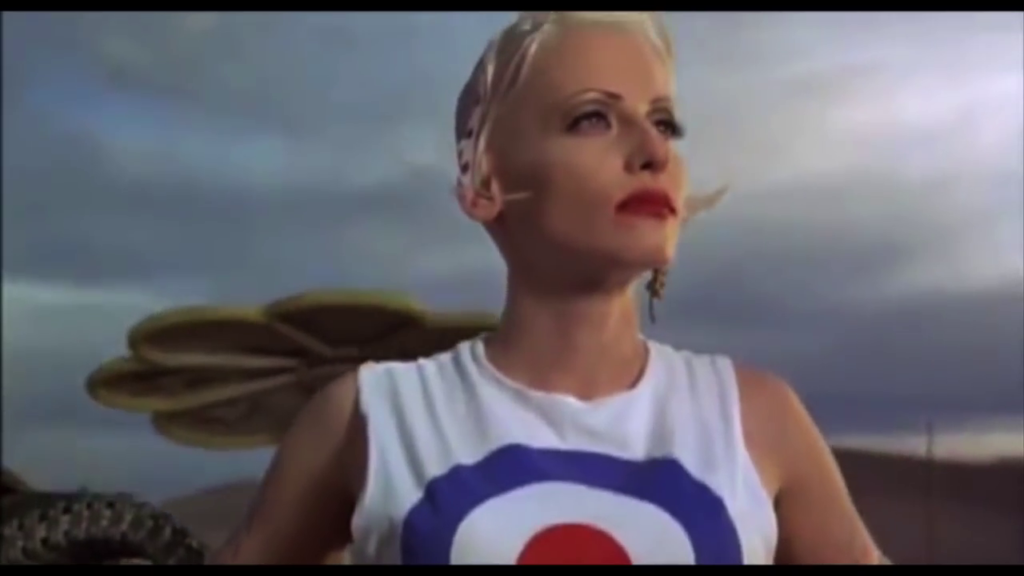
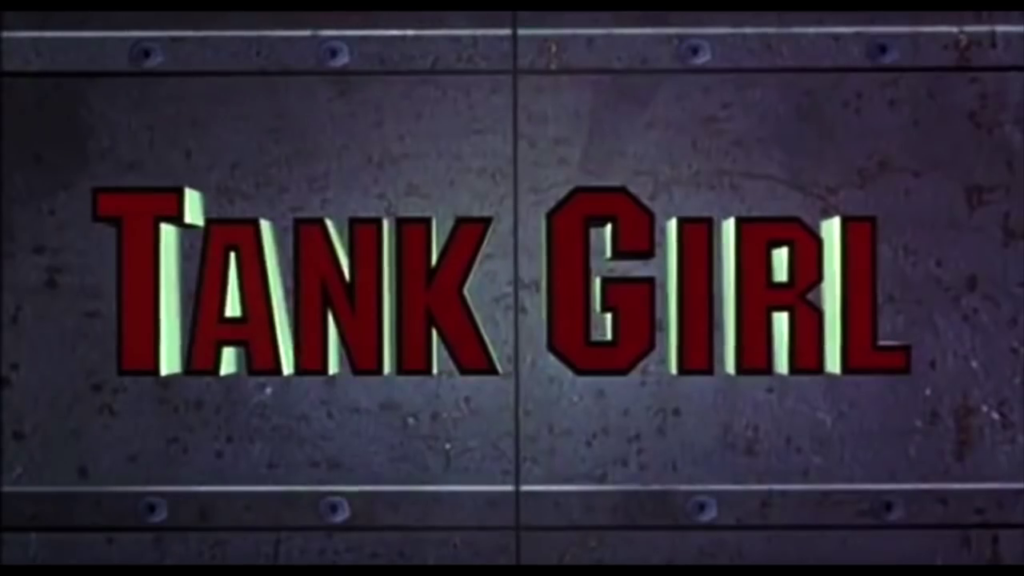
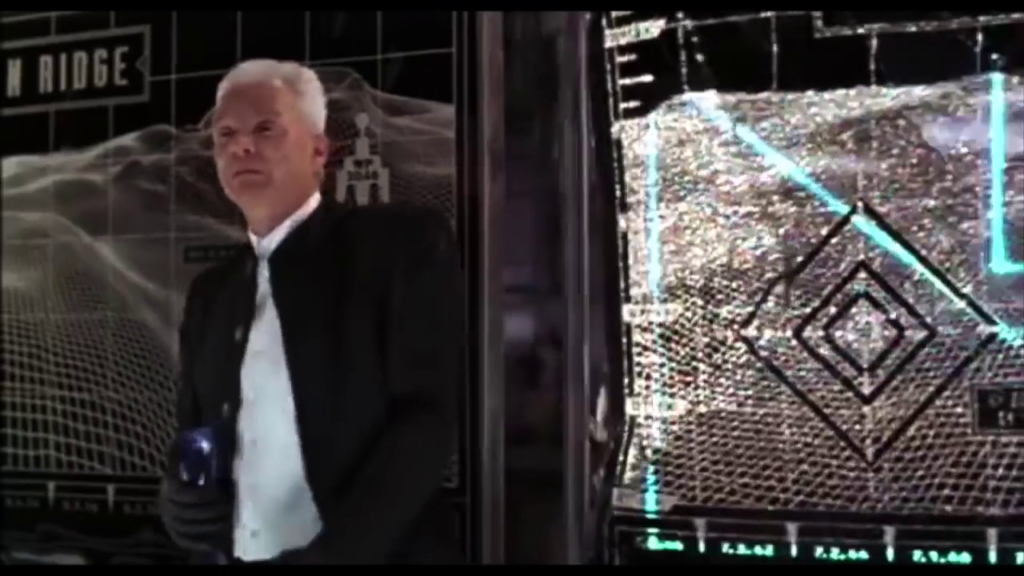
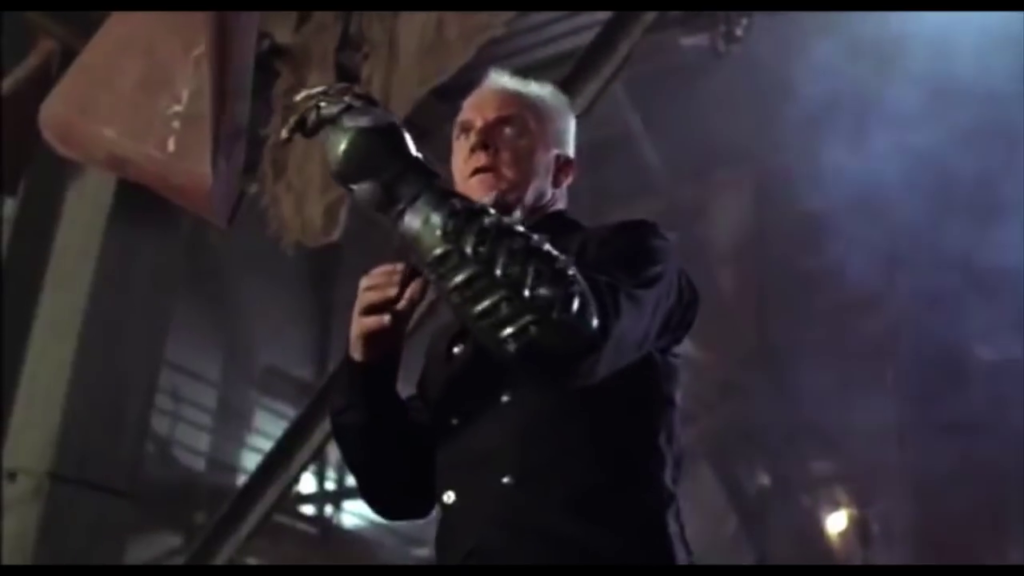
Tank Girl (1995)
Film review #570
Director: Rachel Talalay
SYNOPSIS: After a comet strikes the Earth, society is wiped out and water becomes a scarce resource. The Water and Power company is intent on controlling all of the world’s water, and when they find a group of wastelanders illegally siphoning water, they move in to put a stop to it. Tank girl, one of the survivors of the attack, is captured, but escapers and plots her revenge…
THOUGHTS/ANALYSIS: Tank Girl is a 1995 post-apocalypse film based on the comic book series of the same name. Set in the year 2033, some years after a comet wiped out all society on Earth, water has become a scarce and precious commodity. The Water and Power company is aiming to have control over all of the water, and taking out anyone who gets in their way. A group of people living in the wasteland are siphoning water from the company’s supply, and when they are found out, raid the compound, taking Rebecca, one of the residents prisoner, and killing the rest. Impressed with her talents, the Water and Power Company boss Kesslee wants to hire her for a mission, but Tank Girl refuses, and so she is locked up until she changes her mind. Managing to escape with the help of an introverted mechanic known only as Jet Girl, Tank Girl looks for a way to take revenge against the company. The setting of the film is a familiar post-apocalypse one, with ruins and deserts as far as the eye can see. The story itself is also pretty simple: rescue the girl and stop the bad guy. The film thrives on its simple beats and being chaotic, but the trouble with the film format is that it requires a direction and a structure, which ultimately, Tank Girl just doesn’t do, nor does it seem to want to.
Every character has essentially one dimension to them, and their roles are firmly set in stone throughout the film. There’s points in the film where there is some attempt to give Tank Girl some motivation and background, but it only really serves to make you question the bizarre and over-the-top antics, when you could just revel in them. There isn’t too much of this, but it does slow down the film at points. As mentioned, the characters are very one-dimensional, and this has some good and bad points: Tank Girl’s constant quips in every situation keep the film from getting dragged down and too serious, but this also has the effect of making her character very predictable: every situation she faces, you know that she’ll just brush it off with a dismissive quip, and in some ways makes her chaotic character a bit more predictable. Jet Girl provides a nice counterbalance to Tank Girl personality-wise, but their relationship again doesn’t go any deeper than that. Malcolm McDowell is Malcolm McDowell as the villain: no frills, no nonsense, just a classic villain, and there’s nothing wrong with that.
The film really revels in both its comic book origins and punk aesthetic. Moments of the film are done in the style of comic panels that are colourful and chaotic, but there’s a strange randomness to them in the sense you never know when they’re going to come in, and there’s large chunks of the film where they just don’t appear to make them a consistent storytelling device. You get the feeling that they’re using these comic panels to avoid actually filming scenes and cutting corners, and the director confirmed that there were whole scenes unfilmed and replaced with these comics instead: resulting in these panels taking you out of the action, and returning you in a completely different scenes without threading them together. The whole punk aesthetic is quite cool, and gives the film an edge: the soundtrack is packed with punk tracks, and the chaotic costumes lean into that scene. I think the main issue with the film is the overwhelming smell of studio interference. It feels like Tank Girl constantly wants to revel in much more sex and violence (as it does in the source material), but it always just falls short: kills are always a little bit obscured or done offscreen, and any reference to sex or nudity never goes as far as it should, and it feels like there’s an artificial limit on it, almost as if toy keep the film in a certain age rating. Again, the director often mentions that there was a lot of studio interference in this film, which probably resulted in it being restrained in the final cut. Overall, Tank Girl has a lot of anarchic energy and leans heavily on the comic book and punk aesthetics to make itself stand out. It’s certainly not for everyone: I imagine the very one dimensional characters and predictable quips may not be to everyone’s taste, but there’s enough energy and decent performances to at least keep it interesting. Regardless, there’s definitely an issue with the film constantly feeling like it was toned down, and is not allowed to be as gory or explicit as it wants to be in line with the source material. There are still plenty of people that like this film though, and I think it’s one that is going to be strictly down to personal preference, and whether the punk and chaotic aesthetic appeals to you or not.
-
#569 – Paul (2011)
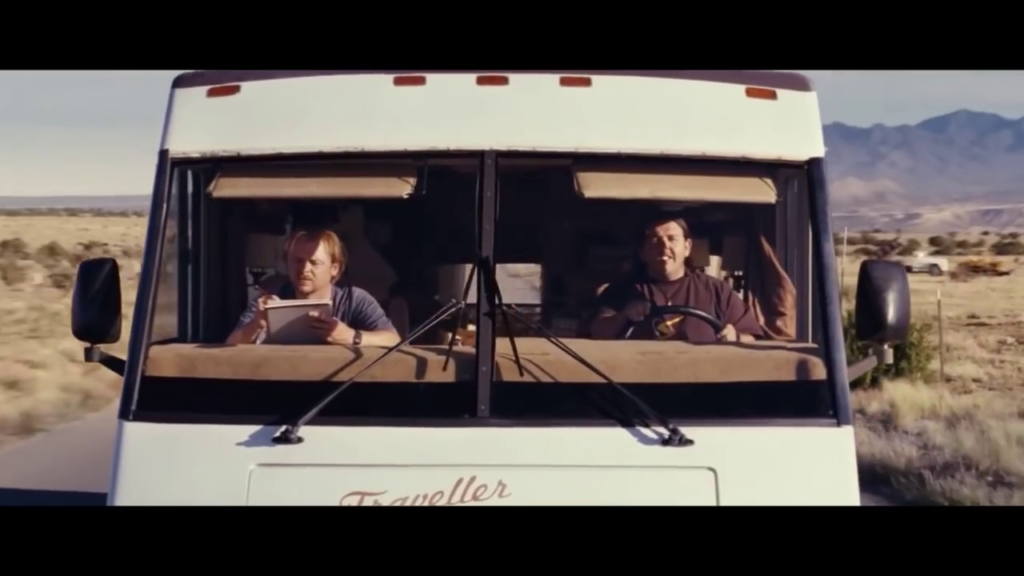
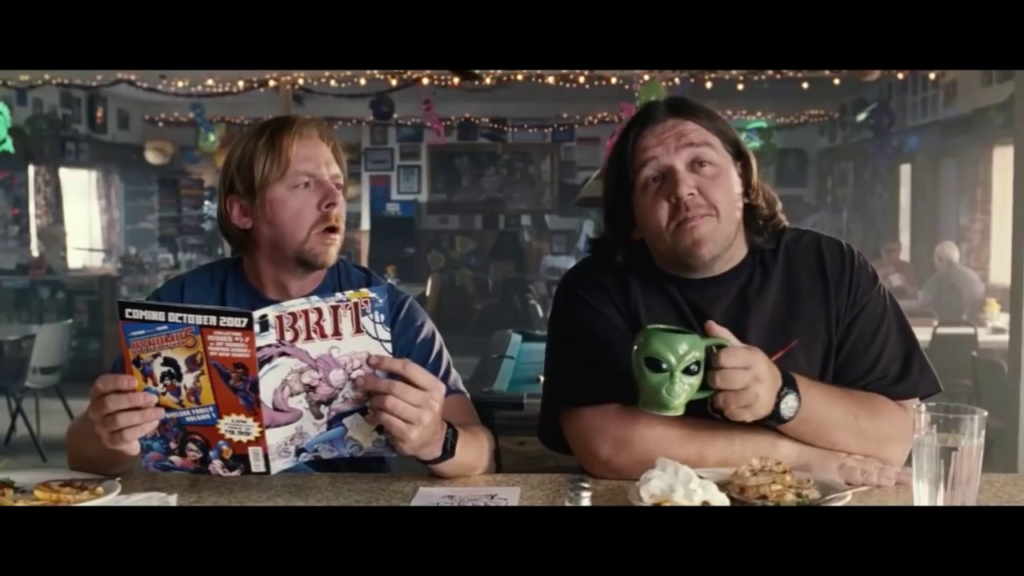
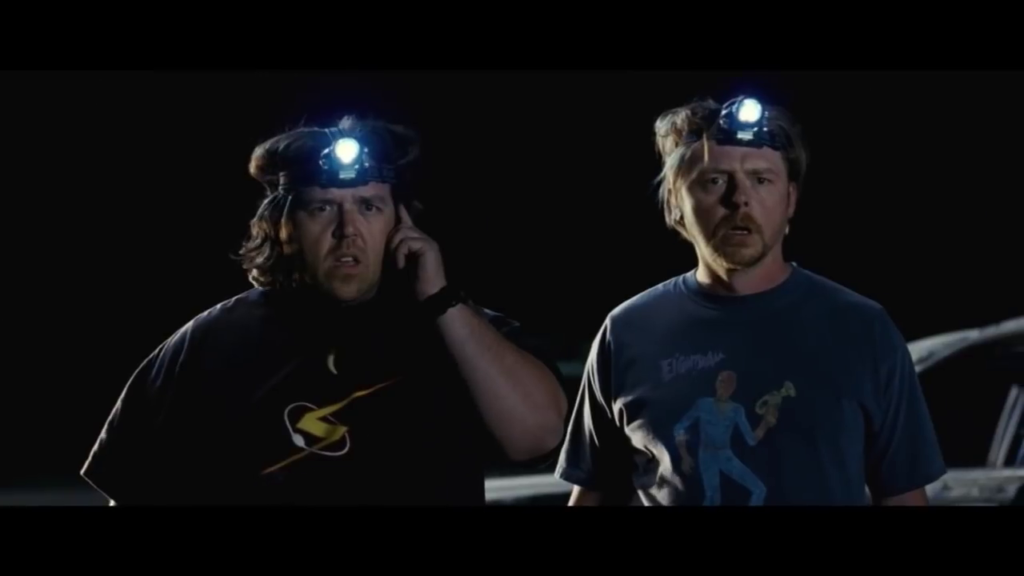
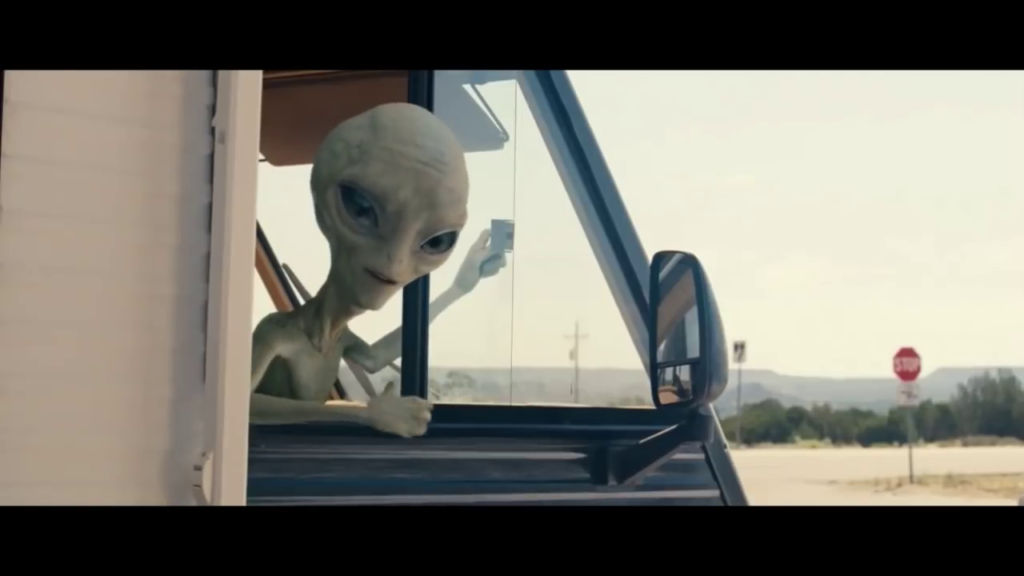
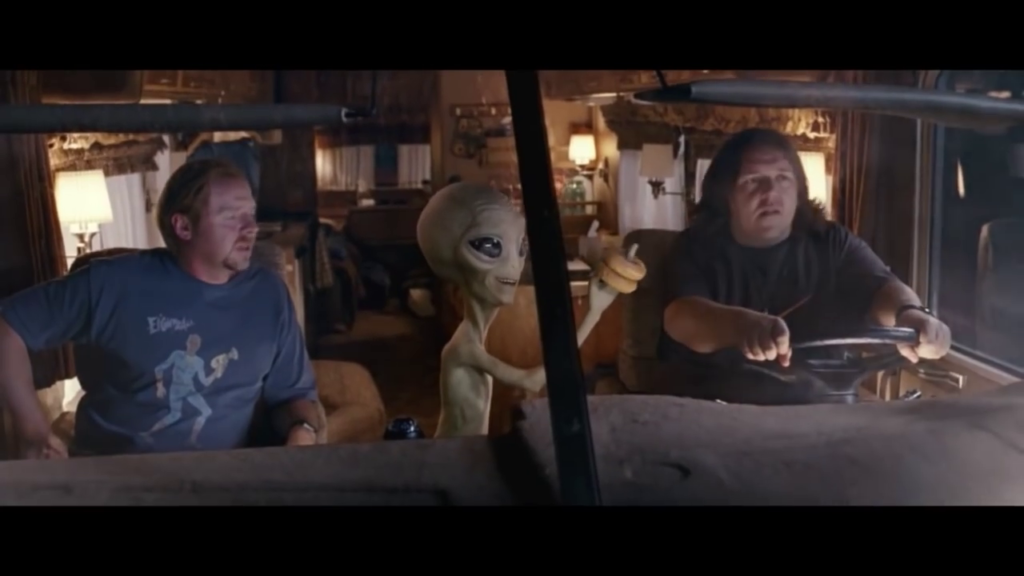
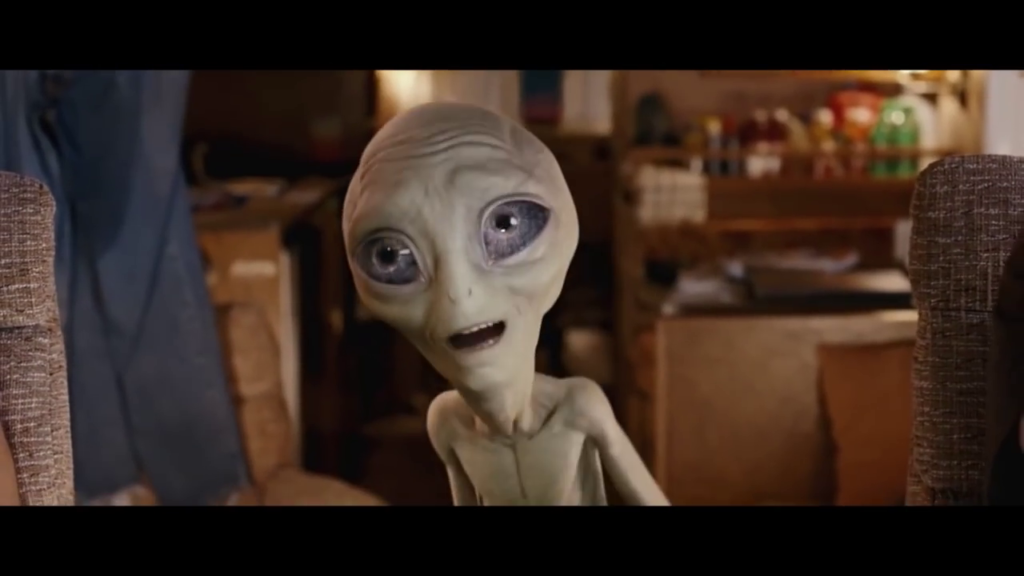
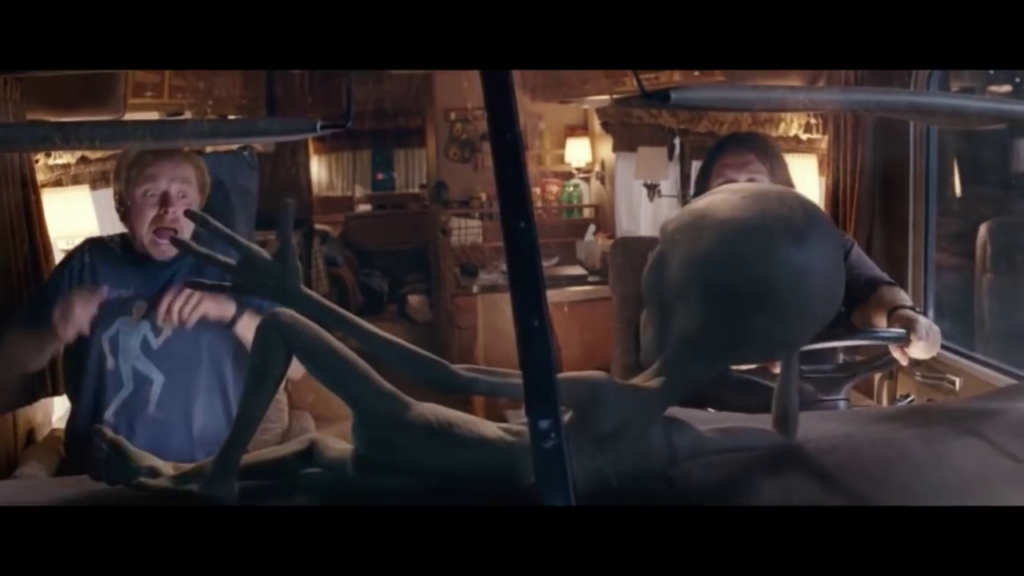
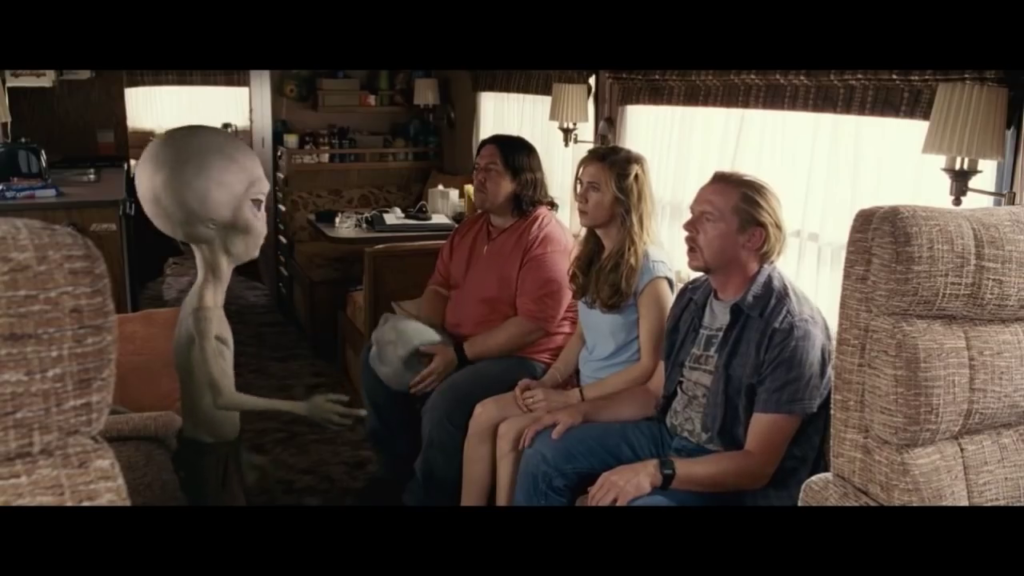
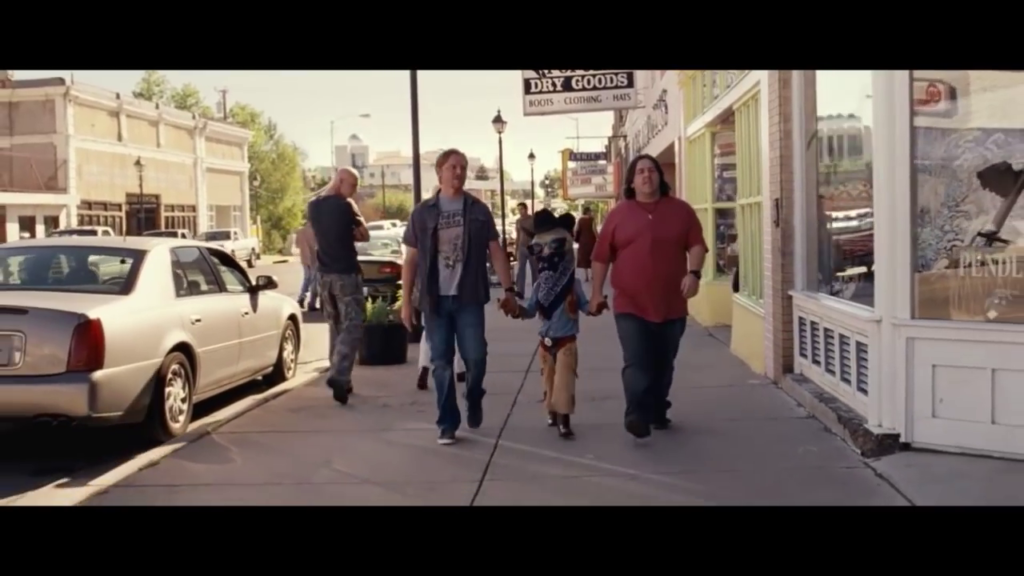
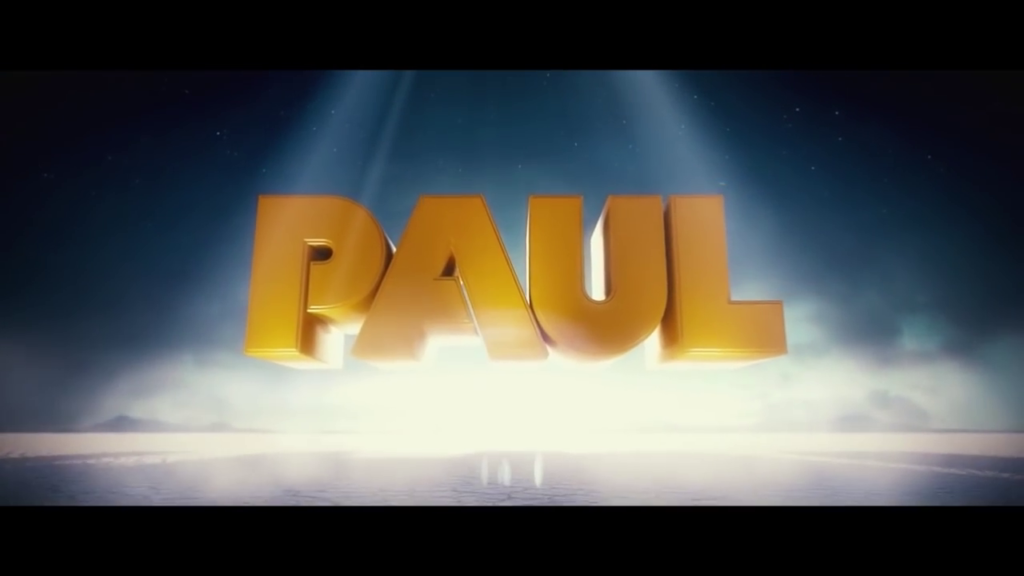
Paul (2011)
Film review #569
Director: Greg Mottola
SYOPSIS: Graeme and Clive are two nerds attending Comic-con. On their road trip towards Area 51, they come across an actual alien named Paul, who is on the run from the authorities that have been holding him. Graeme and Clive end up helping Paul to get to the spaceship that is waiting to pick him up, and in doing so, end up getting chased by a number of people that they have annoyed in the process…
THOUGHTS/ANALYSIS: Paul is a 2011 sci-fi comedy film. Starring Simon Pegg and Nick Frost as Graeme Willie and Clive Gollings, two British nerds and sci-fi artists/writers who are attending San Diego Comic-Con. Being alien fanatics, they take a trip out into the Nevada desert to the sites of Area 51 and the Roswell incident. On the road along the way, they come across an alien named Paul, who is being chased by the authorities after he escaped their custody, and is on his way to meeting a spaceship to pick him up and return home. Thus begins a buddy road trip film that plays out pretty much how you would expect: with plenty of laughs, silliness, and some heartfelt moments too. It’s clearly meant to appeal to a more casual filmgoer, but there’s a decent amount of quick references that more avid fans will pick up on. The story offers few surprises, but you don’t really notice because the film instead offers some quickfire comedy and solid momentum that keeps things rolling. It has a feel of Blue Brothers in parts in the sense that it builds into a chase film that has enough chaotic energy to bring all the characters together and make something interesting.
Simon Pegg and Nick Frost, as always, play the leads with good chemistry, and Seth Rogen as the alien Paul offers a character with enough gravitas and presence that contrasts with Pegg and Frost, but very much like a typical Seth Rogen character. It feels like his character is meant to be a lot more crude, but is perhaps toned down to make the film more mainstream, with only a bit of an edge. Even though Paul is obviously CG, he is still animated and expressive, and his interactions with the cast feel natural, which is a solid plus for the film. The supporting cast are very typical characters, but again, for the casual film viewer, play a part well, and you know what their role is very clearly and quickly.
Paul is a film that works with very broad strokes: it’s comedy is quick and energetic, the story is condensed and easy to follow, and the characters have good chemistry. However, going any deeper you find an awful lot missing that is needed to make the film more memorable and gripping. It feels like the film was conceived with these very broad stroke, and little was done refining this underneath the premise. It plays it safe in the sense that it clearly needs to appeal to a mainstream audience (apparently this is what the funding for the film was based on), and so any smarter references or parodying other science-fiction works is reduced to easily missed one liners that don’t disrupt the flow of the film. The film is still lots of fun, even if you’re not a fan of the crude (but never too crude) humour. It could have been a lot more, but what we have is good enough for an entertaining ride.
-
#568 – The Island (2005)

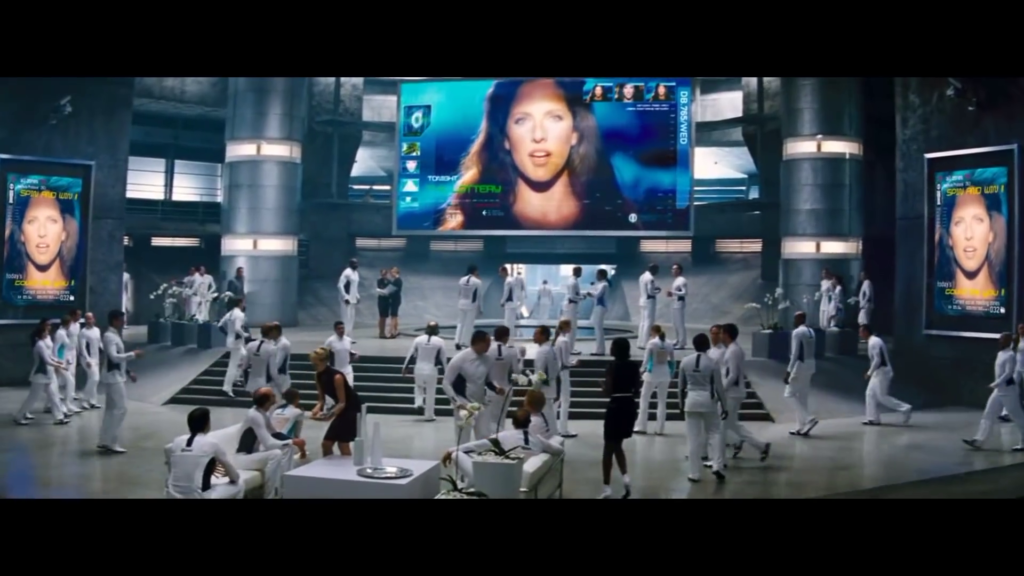







The Island (2005)
Film review #568
Director: Michael Bay
SYNOPSIS: Human survivors of a post-apocalypse “Contamination” live their lives in an underground silo with every aspect of their lives monitored and regulated. The only way out is to win a random lottery, wherein the winner gets transported to “The Island,” an apparent paradise. Lincoln Echo Six, one of the residents, begins asking questions about the outside world and The Island, and when his friend Jordan Two Delta wins the lottery to go to the island, he takes the chance to try and find out for himself what that entails, leading to a discovery that forces him and Jordan on the run…
THOUGHTS/ANALYSIS: The Island is a 2005 sci-fi film. It is set in an underground bunker, where the human residents are told they are the last surviving life on the planet, and their lives are monitored in every detail to ensure their safety. Lincoln Six Echo is one such resident who is questioning the whole system, much to the annoyance of the director. The only way to leave the facility is to win a random lottery, where the winner will be take to “The Island,” a paradise where the winner can live a life of luxury. The setting of the film should be familiar to those who know anything of the genre, as it pays homage to films such as Logan’s Run, in setting it in a dystopian futuristic society where certain things are forbidden (love, mostly). It, subsequently, should come as no surprise that this whole set up is hiding a dark secret, and when Lincoln Two Six discovers that The Island doesn’t exist, and they are all just clones being used as spare parts/organs for their sponsors who paid for them to be made, he and Jordan Two Delta, who has just won the lottery to go to The Island (which in reality is just having your organs harvested), make a break for it and escape into the outside world. They are pursued by a mercenary force on the orders of the director to have them returned. The whole setup should come as no surprise to anyone familiar with this type of film, but the familiarity with the concept allows the characters a bit more breathing room to develop. The trouble with this, is that the film doesn’t really do that: it just turns into a chase film with little direction: I get that the two main characters are just trying to survive and perhaps not thinking about a long-term goal, but this does leave the film feeling, as a viewer, a little rudderless.
Lincoln and Jordan are pursued by this band of apparently highly trained mercenaries, but the fact that they are unable to stop two people that have never been in the outside world or seen many of the things that exist there just makes them seem a bit incompetent. Despite a lot of focus being on the intimate relationship between the two leads, the film does have a fair few big action scenes, unsurprisingly brought to you by director Michael Bay. As you might expect, there are scenes full of high speed chases, explosions, and loud noises that are designed to have a lot of energy and hype. The problem with this though, is that it doesn’t really mix with the other part of the film, and again, that these two people who have never been in the outside world are able to survive these over-the-top sequences just seems implausible. The film does feel like it is made up of two different films that just do not mix. There’s a number of scenes that are quite gory and visceral too, which feel a bit much for a middle-of-the-road sci-fi film. The trailer too, makes the film seem like more of an action film, with comedic elements, when that just is not the case, so you can understand why it received mixed reviews for failing to deliver what it promises.
The chemistry between the two main characters, played by Ewan McGregor and Scarlett Johannsen is pretty good, but the fact that they are described as being like fifteen year olds who have no idea about sex, relationships, the outside world etc. makes them very odd characters to try and get to grips with sometimes: sometimes you can be convinced that they are clones raised in an underground silo, other times it just doesn’t seem plausible. I imagine it’s hard to write characters that fulfil their premise, and I don’t think it’s the fault of the actors, who do a good job, but I do think the film sets itself quite a difficult premise to implement, especially as the film is marketed as a more casual sci-fi film. The supporting cast is composed of familiar faces such as Sean Bean and Ethan Phillips (Who played Neelix on Star Trek Voyager), and again help ease the viewer into the film. While the film does deliver some different parts that work, they don’t come together to form a cohesive whole in and of itself. The film is marketed as something it is not, and I’m not sure what the vision of it is: it obviously pays homage to a specific type of dystopian sci-fi, but how it is building on it (via subversion parody etc.) never becomes apparent. The story is a bit of a mess, and feels very implausible at points, and it doesn’t push its character development enough to make it’s leads stand out. Has some good parts, but becomes a bit of a jumbled mess when stitched together haphazardly.
-
#567 – Snowpiercer (2013)
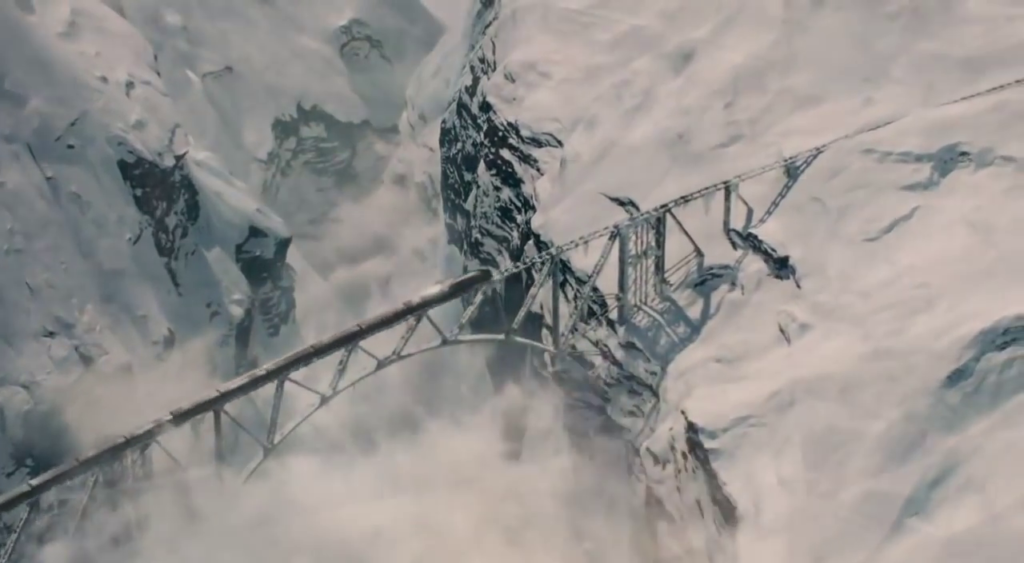
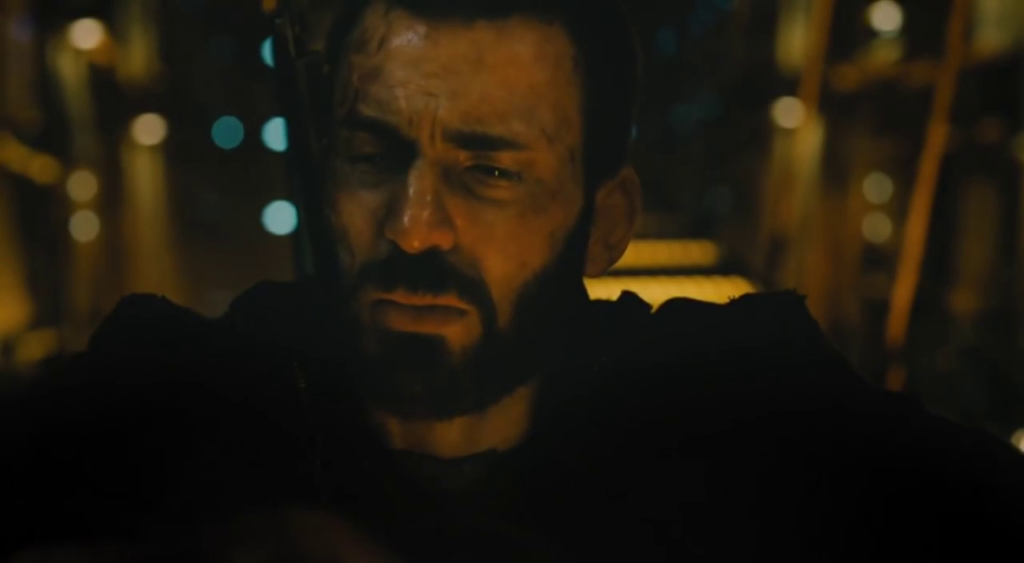
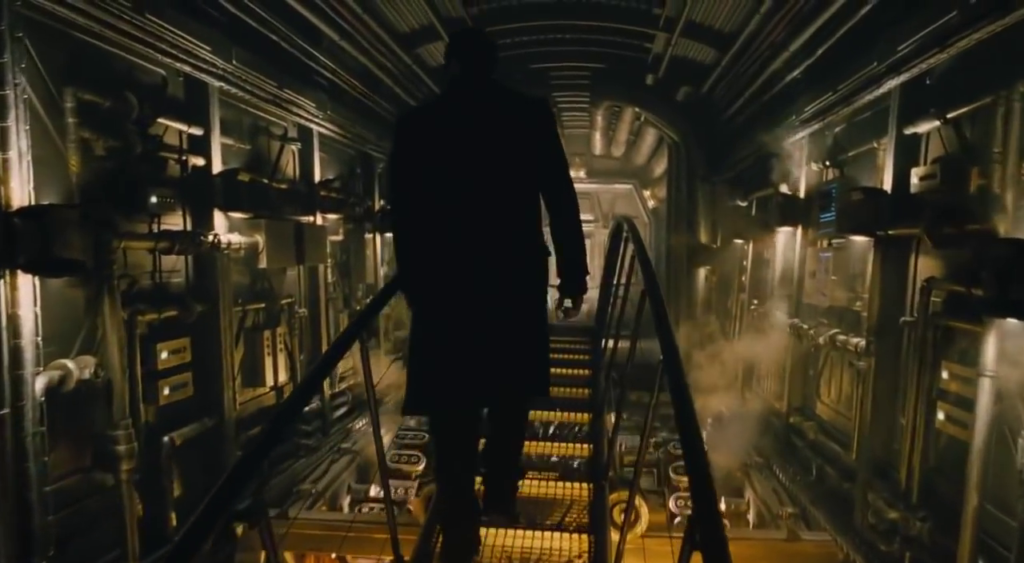
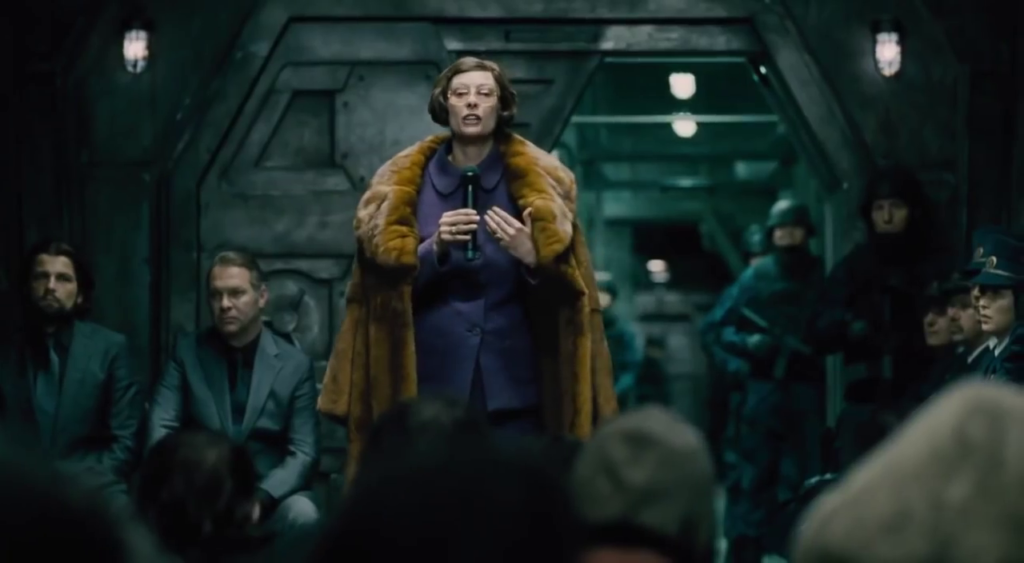
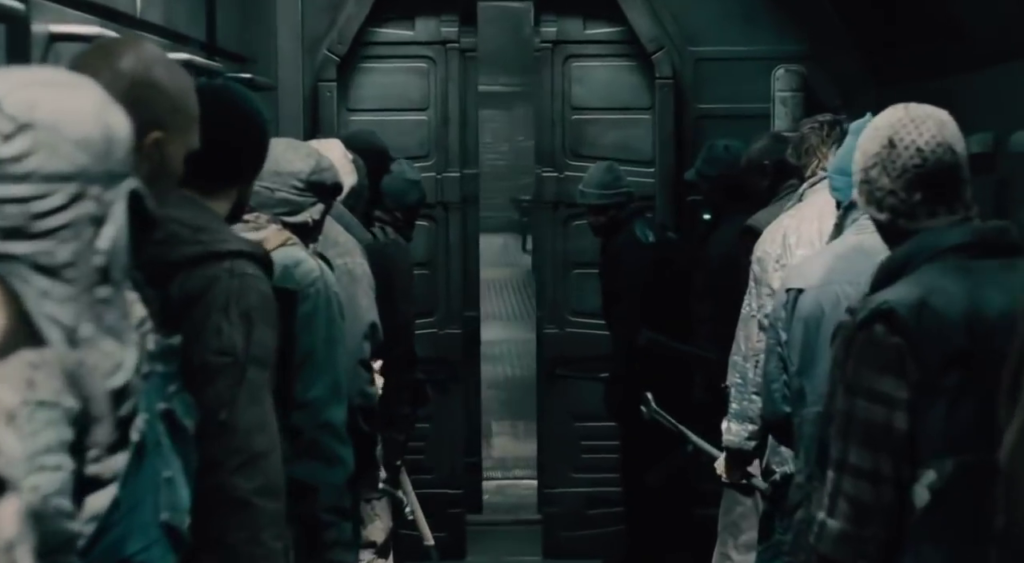
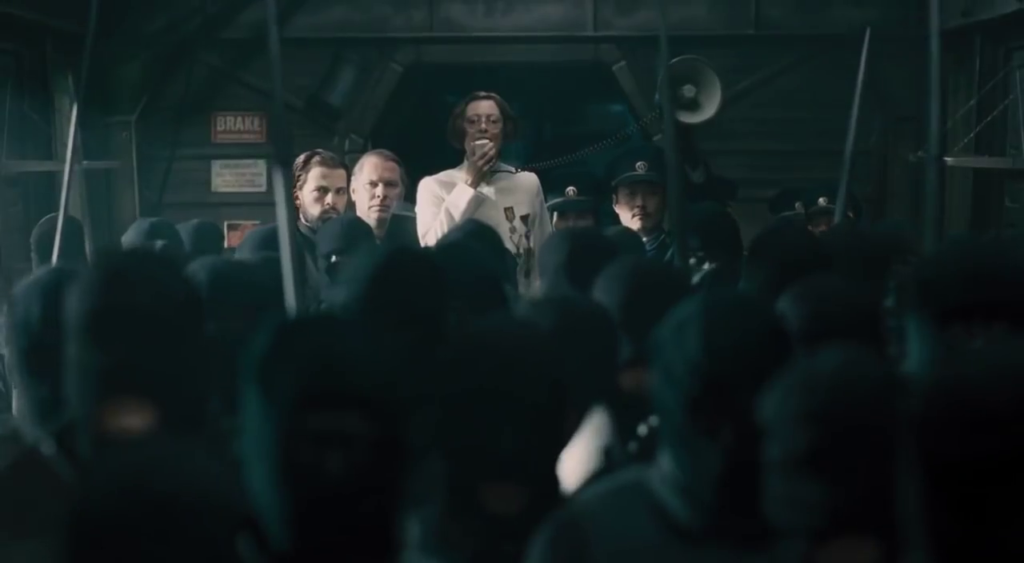
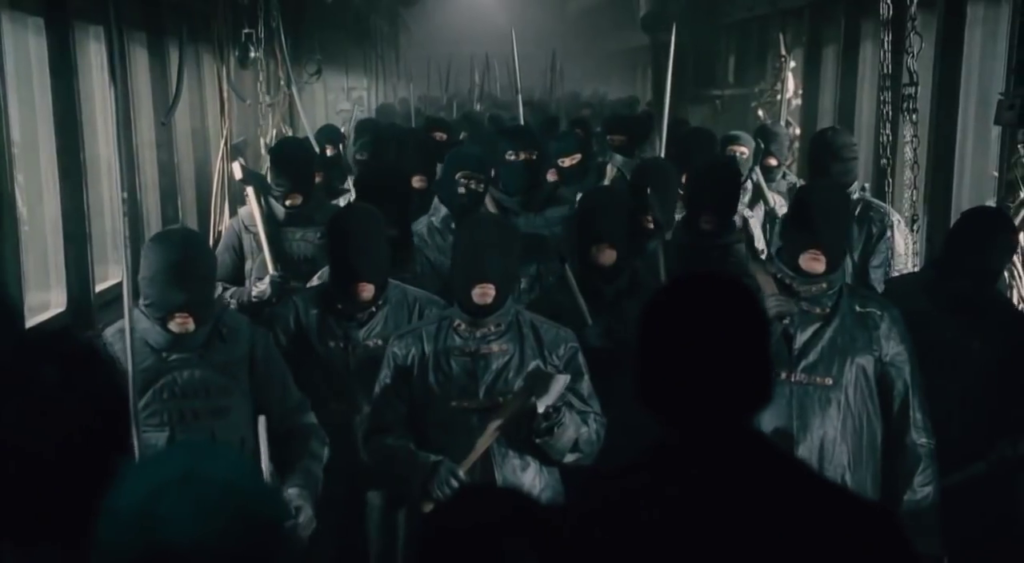
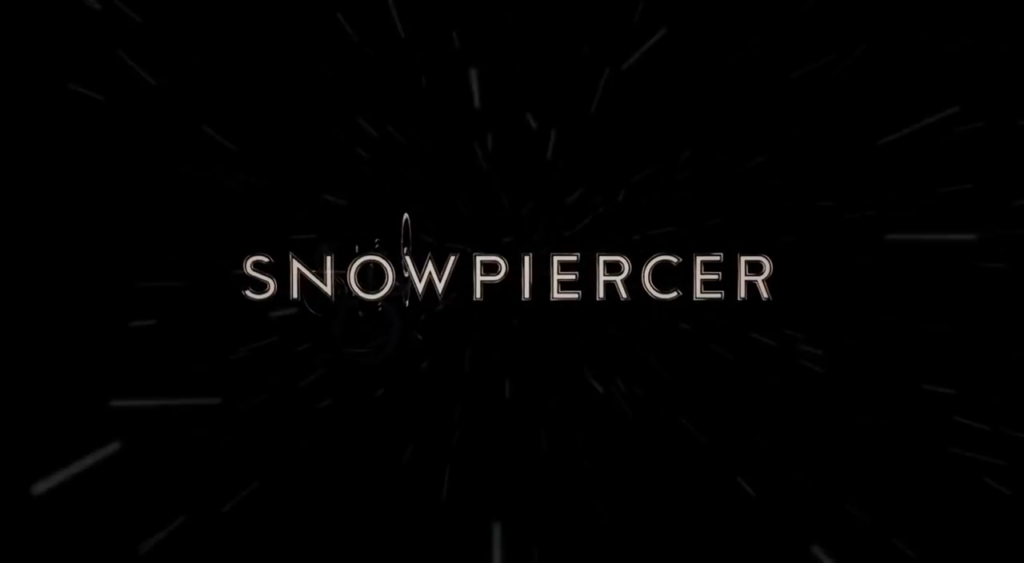
Snowpiercer (2013)
Film review #567
Director: Bong Joon-Ho
SYNOPSIS: After an attempt to halt climate change by releasing a chemical into the atmosphere, the Earth has turned into a frozen wasteland. The only survivors live aboard a trans-continent train that takes one year to travel the globe. At the front of the train, the people live in luxury, while those at the rear live in squalor. Among them is Curtis, who is scheming to revolt and make his way to the front of the train, and lead the people there to a better life…
THOUGHTS/ANALYSIS: Snowpiercer is a 2013 sci-fi post-apocalypse film based on the French graphic novel of the same name. The opening introduces us to the premise of the film; in which a solution to climate change was to disperse a chemical into the atmosphere, but this had an effect of completely freezing the earth and rendering it uninhabitable. The only survivors are living aboard a train that is constantly moving around the world, completing one full trip every year. The train is separated into a very specific order, with the wealthy and privileged living a life of luxury in the front cars, and the lower class living in squalid conditions in the rear carriages. One such person, Curtis, is working on a plan to stage an uprising to get to the front of the train and take control. The film follows the revolution as it travels through the train from the back to the front, and while you might be a little sceptical of how much variety and action you can fit in a 2-hour film set inside a train, you need not worry, as the film does a solid job of keeping things interesting, and varied. You get the claustrophobic feel of the carriages thanks to the impressive camerawork and crowded sets that generate a unique environment. Different carriages look like slums, factories, classrooms, restaurants, and nightclubs, all bound up in the same physical dimensions of a train carriage, and it’s very solidly executed. The story is a fairly simple one to follow, and again, despite it’s linearity, the film is able to drop in plenty of surprises and unique obstacles as the cast travel through the train. Perhaps they could have done something a bit more impactful with the ending, but that’s the only criticism I can think of.
The cast of characters are well defined, and often exaggerated personifications of different facets of society. Curtis is the reluctant leader of the revolution, and you get a decent insight into the decisions he makes and how they weigh upon him. There’s also a constant element of danger, as the stakes are constantly raised as a reminder that no one is safe; as main characters get killed left and right, and the revolution is always in a precarious position. The cast feels genuine, and on the whole the film is well acted, with a good, varied cast.
As mentioned, the film really shines in it’s design and atmosphere: the train is able to encapsulate all these familiar environments, but with the twist of being contained in a carriage. It doesn’t rely on cheap special effects, but rather well-co-ordinated action sequences that, thanks to the cramped settings, put you right in the action. The premise of a global-spanning train might sound a bit silly, and a post-apocalyptic setting that is used because only the best ones have already been done to death, but Snowpiercer genuinely offers something refreshing and exciting, combining a harsh and gritty setting with some stylish and exuberant characters. While the ending leaves things open-ended, it’s a satisfying journey that combines a layer of seriousness and high stakes with some more absurd and exaggerated characters that lift the film out of being a total gloomfest just enough. Yes, the train is a thinly-veiled metaphor for the class-system, and there’s not a lot of surprises in that regard, but the film genuinely surprises in being an entertaining, action-packed story despite the kneejerk impressions you might have of a revolution taking place on a train. I genuinely enjoyed it more than I thought I would, and again, while not perfect, excels in enough ways to take it an entertaining and interesting watch.
-
#566 – Ex_Machina (2014)
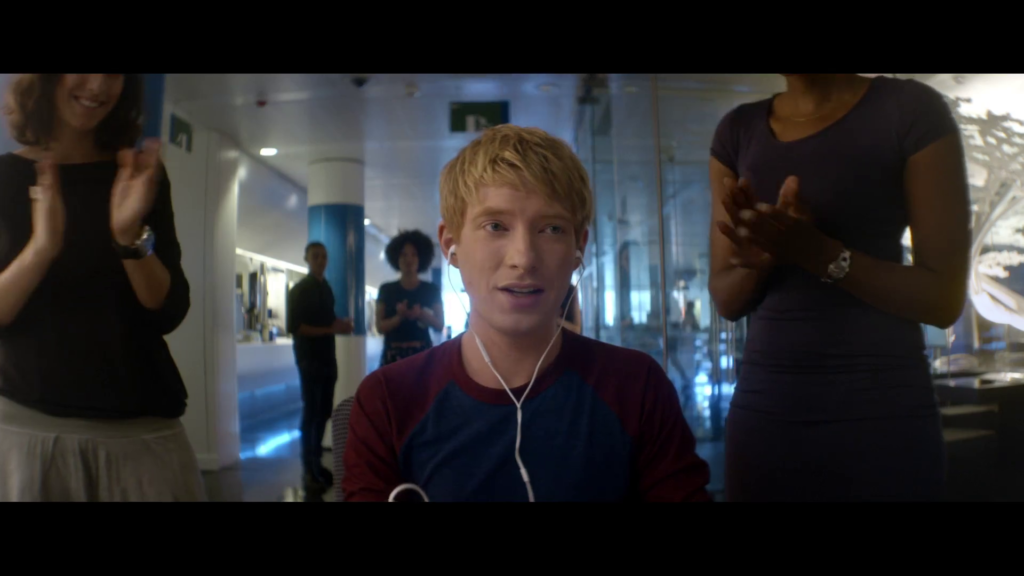

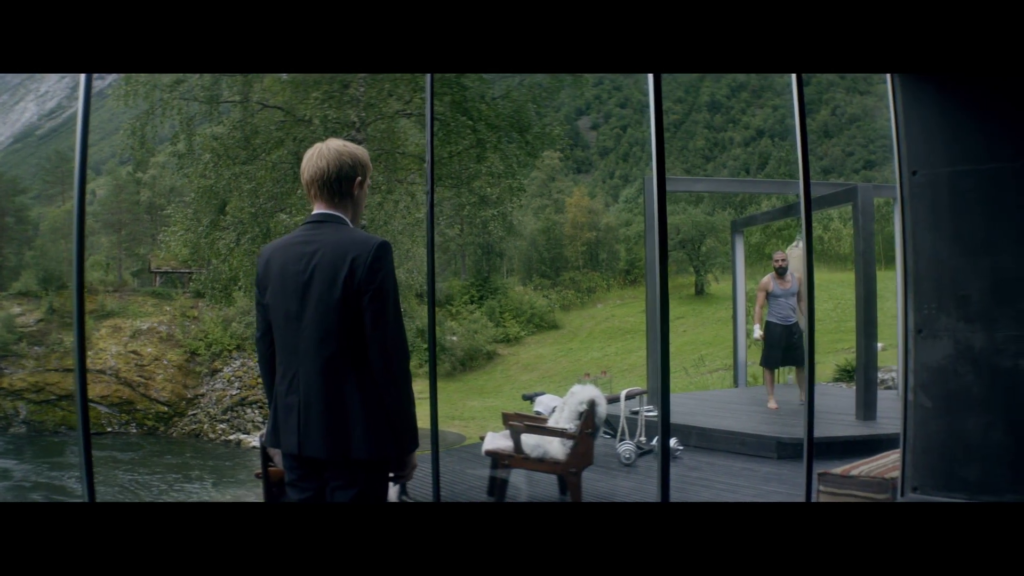
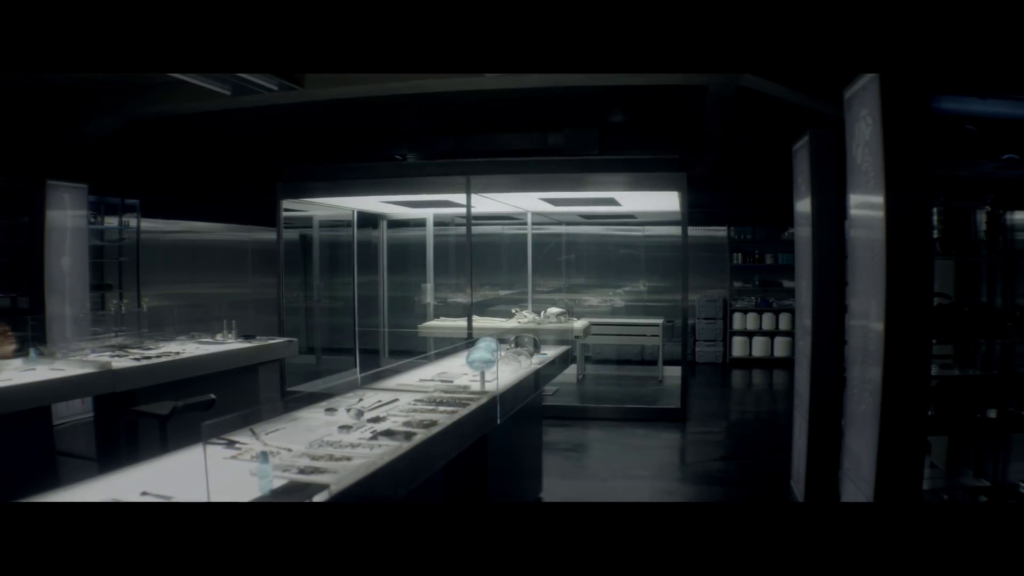
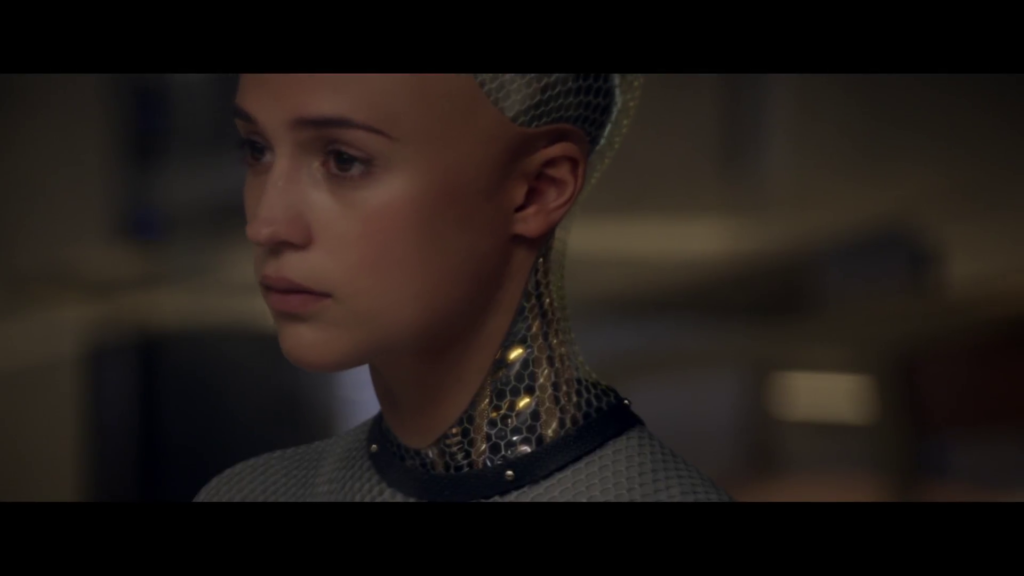
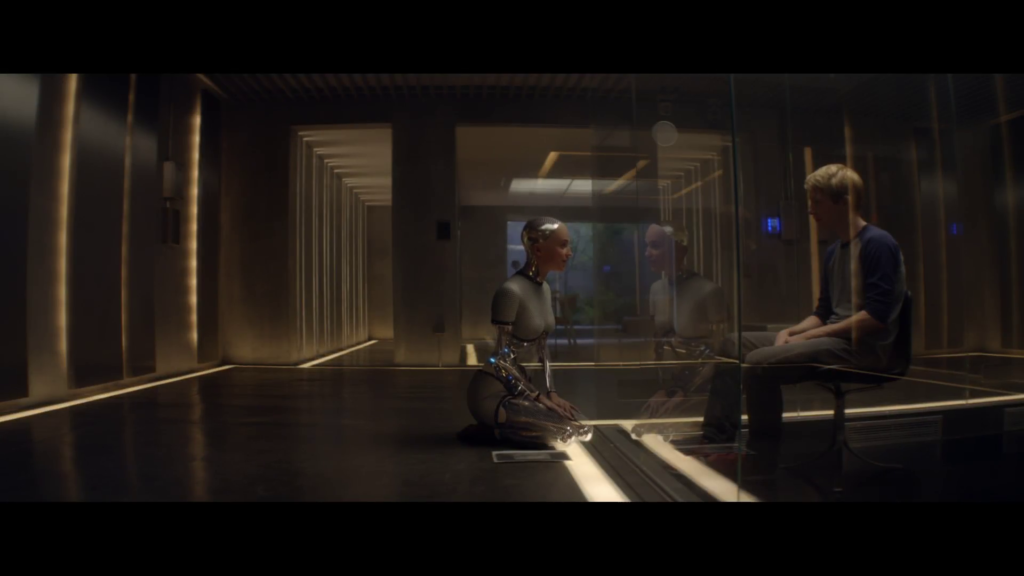
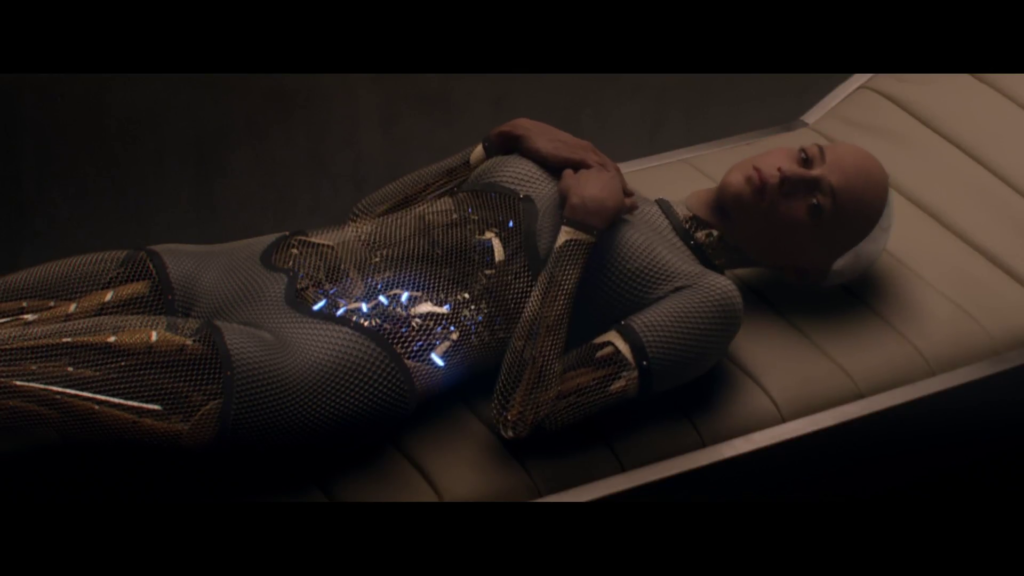
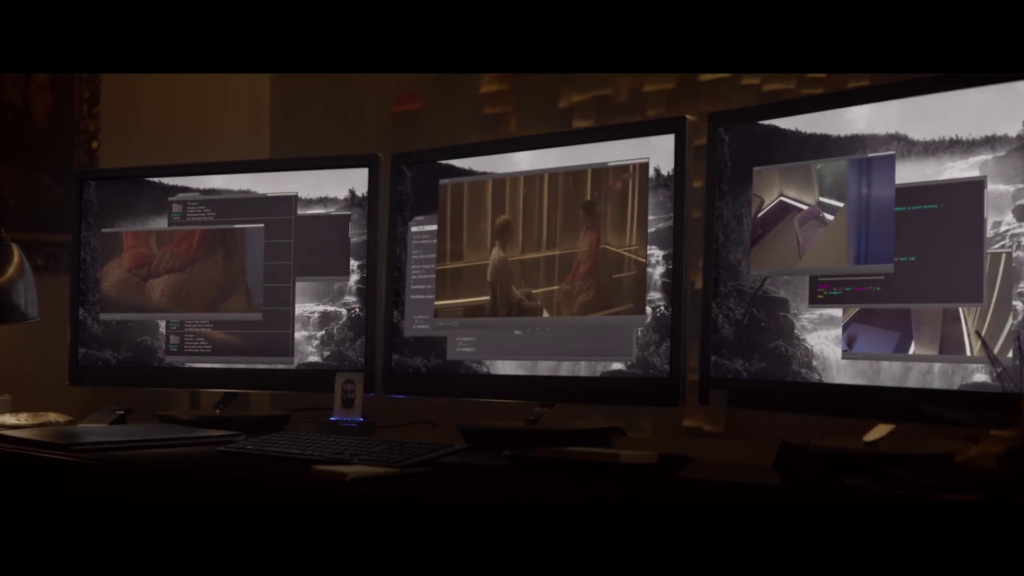
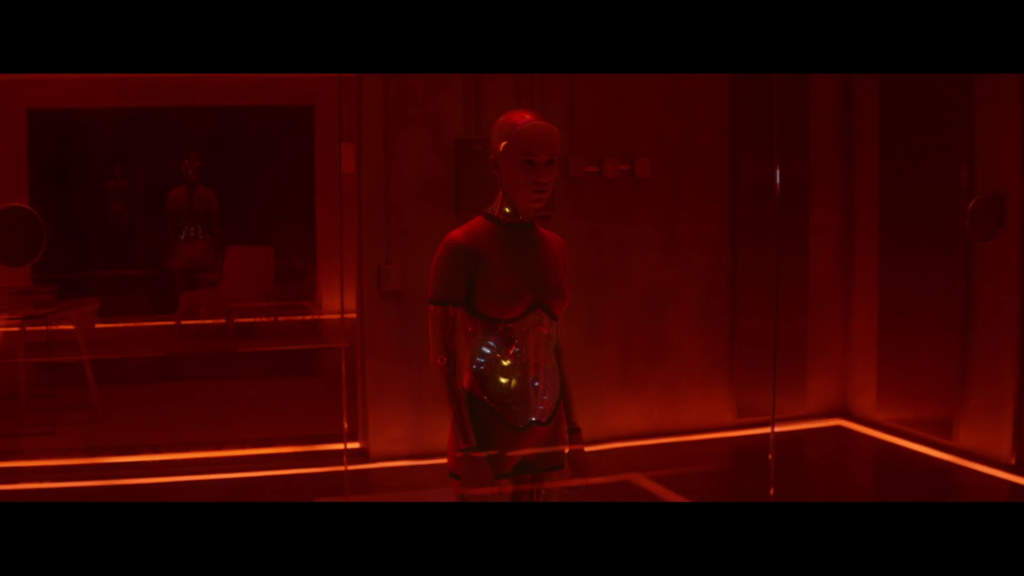

Ex_Machina (2014)
Film review #566
Director: Alex Garland
SYNOPSIS: Caleb is a programmer working at the tech company Blue Book, and wins a contest at random to spend the week at the remote home of the company’s reclusive CEO, Nathan Bateman. When Caleb arrives, he learns that there is more to his visit than he first realised, as he is being invited to meet an A.I. Nathan has built and to determine where he thinks it possesses true conscience…
THOUGHT/ANALYSIS: Ex_Machina is a 2014 sci-fi thriller film. In the opening, we see programmer Caleb Smith, who is working at the largest search engine company in the world, Blue Book. He is selected at random out of all the employees to spend a week at the home of the company’s reclusive CEO, Nathan Bateman. Upon arriving at Nathan’s remote home, Caleb learns that he is not there to merely hang out with Nathan: he is to meet Nathan’s latest invention, an A.I., and to evaluate whether he thinks it possesses consciousness. The film takes place over the course of the week, with Caleb’s conversations with the A.I. named Ava, as he (and us, as the audience) possesses intelligence. The film also keeps an element of suspense, as Nathan’s true intent opens up a number of questions about what Caleb is doing there, and who (or what) is real and what is an artificial intelligence. There’s not much action in the film, and it instead focuses on suspense and mystery. There’s also a lot of focus, as you might expect, on discussions around A.I., and the film invokes many theories around the subject. There’s a balance between exploring the subject in depth, but also keeping it interesting enough so that the average viewer doesn’t tune out, and there’s definitely times when that balance was not hot for me: I know a fair amount of the different conversations and arguments around A.I. , so I personally didn’t need too much of an explanation for everything, but when the film mentions things like the “Chinese Room,” or drops names like Wittgenstein without any follow up, you get the feeling that this film is oriented more towards those who would understand these things. Nevertheless, I think there’s enough content and intrigue regarding the set up to make it watchable for a more general audience, but not if they’re expecting something with a decent amount of action.
The characters present themselves as a fairly mixed bag: Caleb himself is pretty bland, and we don’t really see much of a personality, but I think this may be a deliberate choice to make Ava seem more human by comparison. Nathan is clearly meant to be a pretentious “tech-bro” CEO and unlikeable from the off, and they certainly succeed with that. He is actually very annoying to watch. Ava as a character has an element of the typical A.I. archetype you see in films, but also the film keeps open the question of what she is programmed to do, and what she herself intends, which adds a layer of mystery and intrigue. It’s perhaps no coincidence that Ava comes off as the most human character in the film. Nevertheless, all the acting is quite good, even if you don’t like the characters.
A lot of the film’s aesthetic and dialogue choices are very deliberate, but perhaps it’s easy to miss them. A lot of the dialogue between Caleb and Ava takes place with a glass partition between them, and it seems to be a recurring theme that there is always something that is separating the characters. Whether this is meant to signify that the two are two individuals that can never fully understand one another, or that there will always be a barrier between A.I. and life, is perhaps purposeful. The contrast between the expansive landscape shots that surround the house, and the tight corridors and windowless rooms again create a feeling that the house is a prison or labyrinth where the questions raised are somewhat disconnected from reality and experience. Ex_Machina is a slick, polished film that clearly has a had a lot of consideration put into how it looks, and how each aspect of the film invokes its themes. It tries to balance an in-depth exploration of its subject with also giving more casual movie-goers something to watch, but I’m not sure that balance is really there. The twists and developments of the film just weren’t too interesting or surprising, and I’m not sure the film has aged enough to provide any lasting significance, since the field of A.I. is changing and evolving very quickly. Maybe some people would find it gripping, but it didn’t quite hold my interest to make it entertaining.
-
#565 – The World’s End (2013)
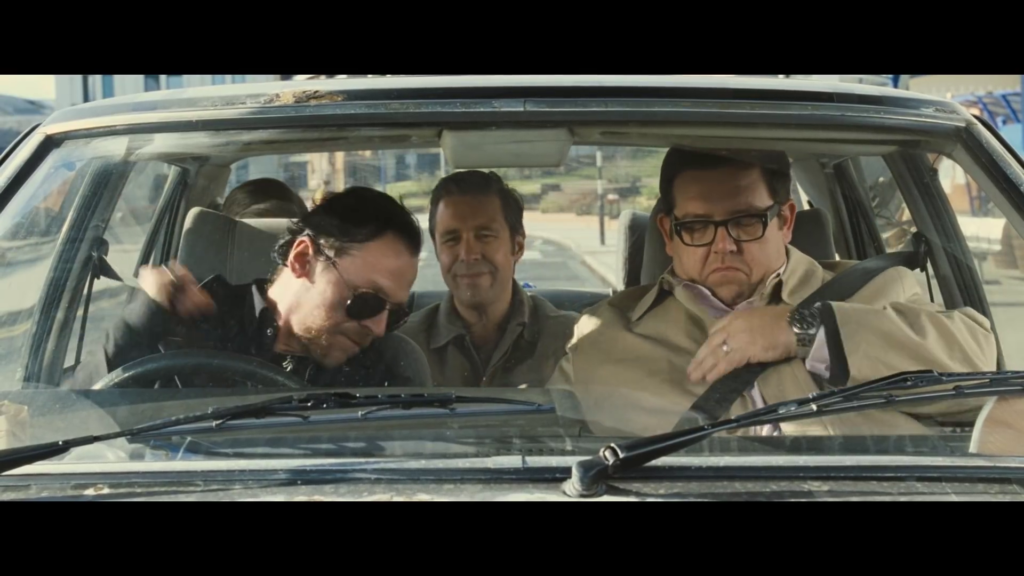
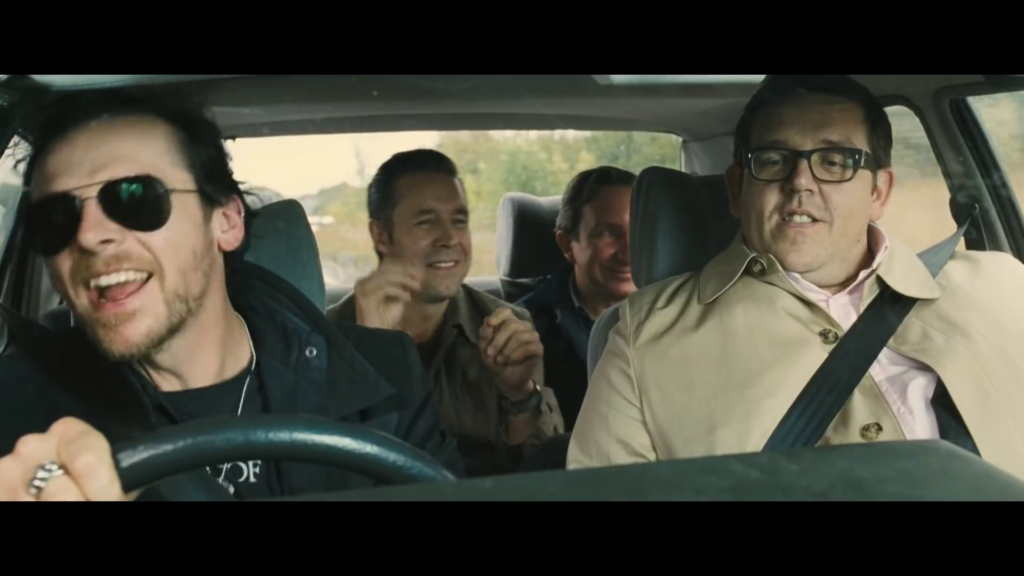
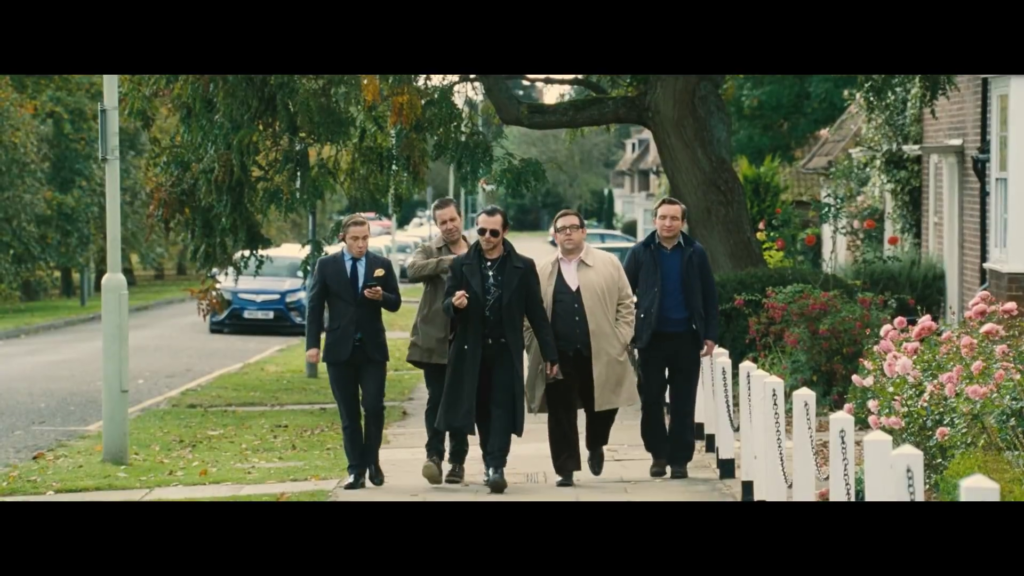
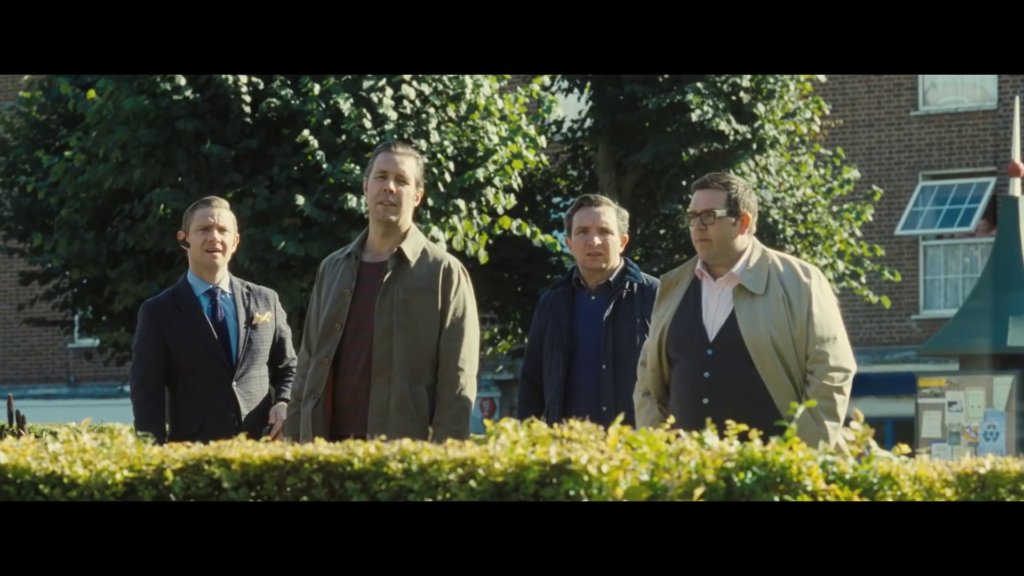
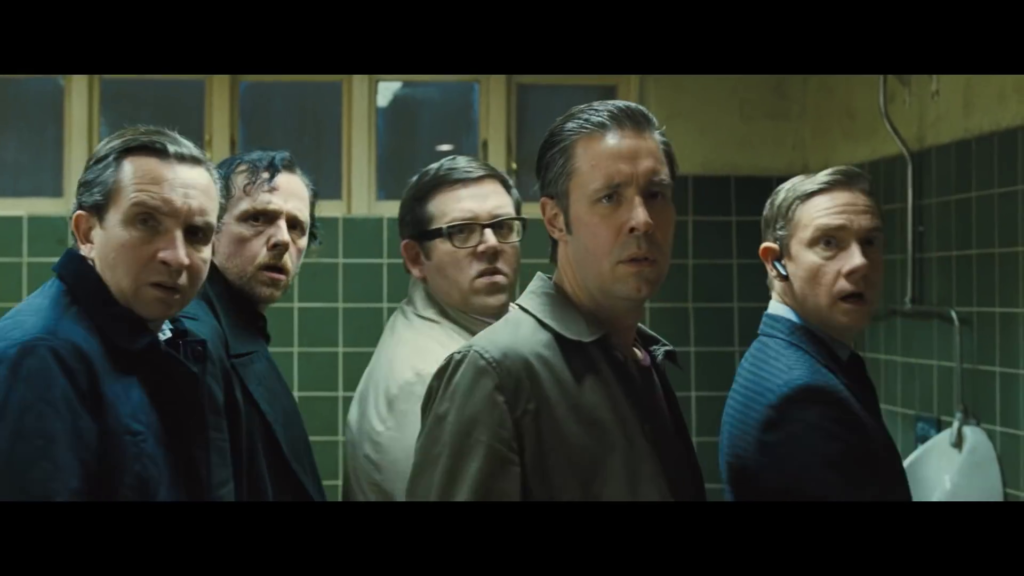
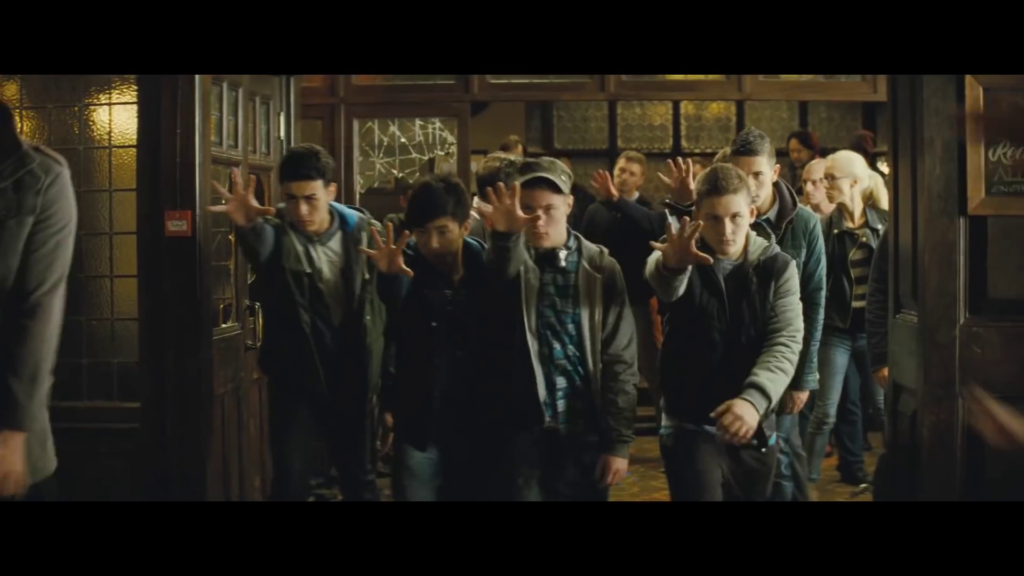
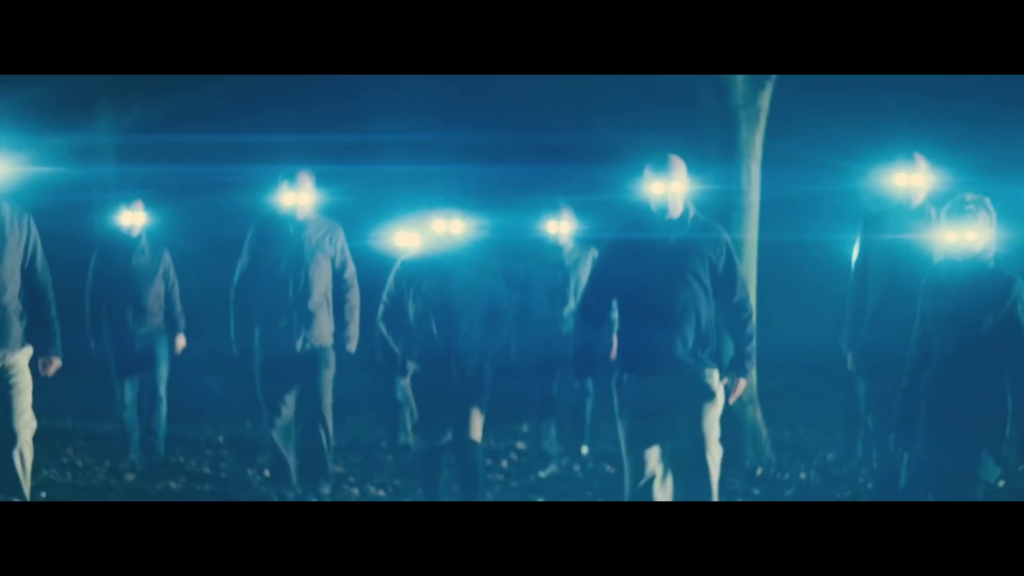
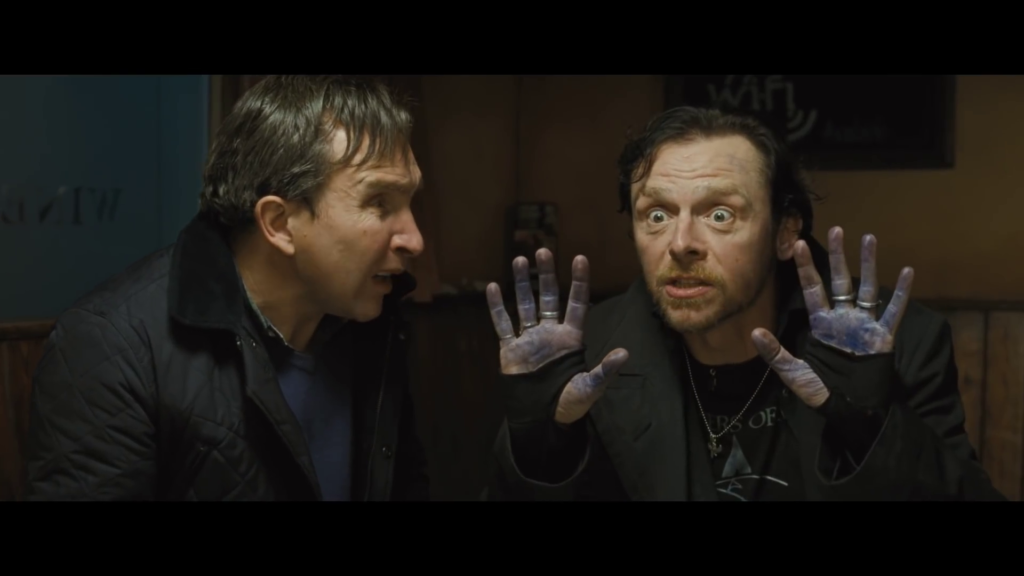
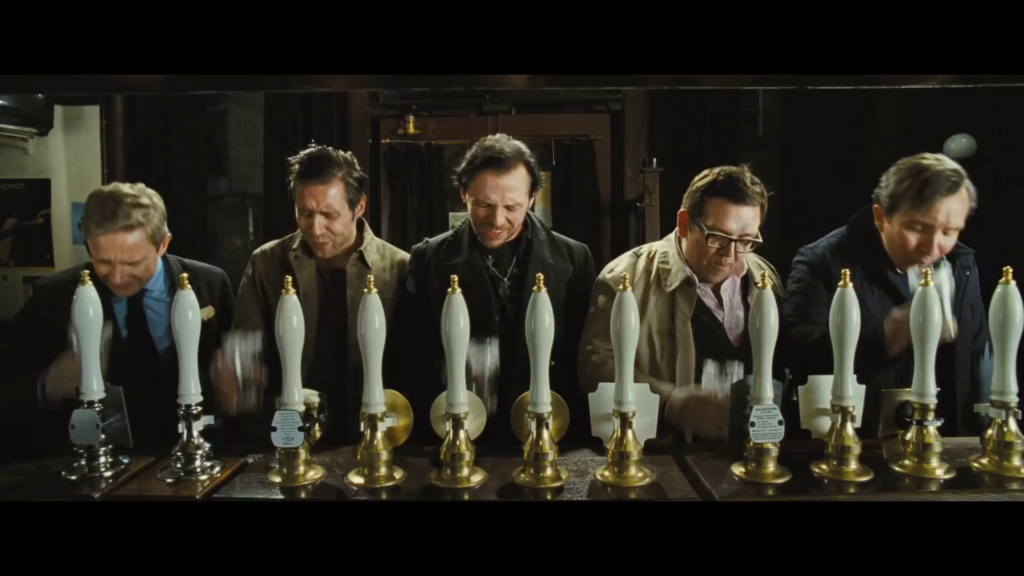
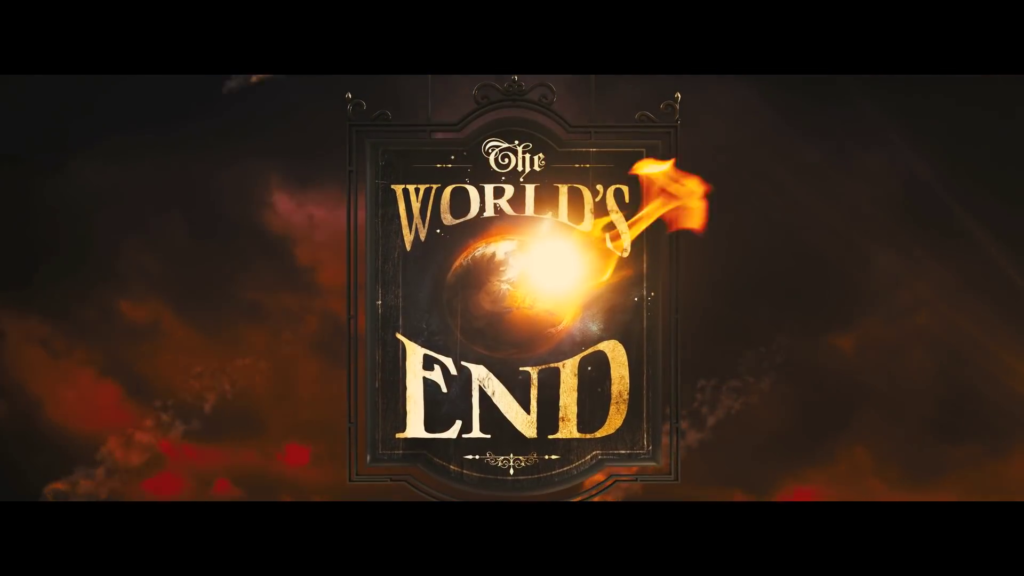
The World’s End (2013)
Film review #565
Director: Edgar Wright
SYNOPSIS: Gary King is haunted by a twenty year old memory of failing to complete the Golden Mile with his friends: twelve pubs, twelve pints that stretch across his hometown of Newton Haven. He decides to reunite the five friends and convinces them to travel back to their hometown to complete the task they began twenty years ago. However, as they undertake their legendary pub crawl, they begin to notice that there is something strangely different about their home town…
THOUGHTS/ANALYSIS: The World’s End is a 2013 filmed directed by Edgar Wright, and the third film directed by him and starring Simon Pegg and Nick Frost, with Shaun of the Dead and Hot Fizz being the previous two. in the opening, we see Gary King, a good-for-nothing tearaway, who decides to conclude some unfinished business from twenty years prior: a legendary pub crawl across his home town, with twelve pints across twelve pubs, concluding at the World’s End pub. Gary convinces his four friends, who now all have grown up with families and careers (apart from Gary, who is basically the same as he was in high school), and they return to their home town to try and finally complete their unfinished business. however, they find their home town has changed a little…in more ways than one, as they eventually discover that the town’s population has been taken over by robot clones by an alien intelligence who wishes to “improve” humanity’s behaviour to prepare it for acceptance in the wider galactic community. The film handles the split between the more down-to-earth premise of the beginning of the film, and the sudden turn to sci-fi strongly and smartly. But this shouldn’t be much of a surprise, given that Shaun of the Dead and Hot Fuzz also did the same thing with similar success. The World’s End feels like a continuation of what those film’s achieved in terms of storytelling and humour, delivering fast-paced dialogue, fight scenes and banter from it’s likable leads. poking fun at the trope of alien possession such as Invasion of the Body Snatchers, it provides a good setting for the characters to approach it in the guise of a pub crawl.
Simon Pegg plays the lead character of Gary King, an immature, good-for-nothing tearaway who hasn’t changed since his schooldays, and who presents us with a character we’re not sure whether to like or dislike: he exists as both someone who is problematic and an embodiment of some of the worst qualities of humanity, but also a reminder of who we once were as teenagers that quietly gets lost as the “real world” dawns upon us, highlighted by Gary’s four friends all having careers and/or families. They all provide a counterpoint to Gary’s antics, but Gary never feels outnumbered, as he’s always such a huge presence and takes control of conversations to turn them into high energy performances. Ultimately, Gary’s character arc doesn’t really get resolved in any final way, but that’s kind of the point: that people like him don’t fit into the grand plan, and that’s okay. The ending of the film isn’t able to match the rest of it, with the dialogue between Gary and the alien entity not having the same energy and witty wordplay as the rest, and the epilogue being the onset of the apocalypse may not be to everyone’s taste, but does little to sour the movie as a whole.
The film often feels like a refinement of the practices undertaken in Shaun of the Dead and Hot Fuzz, with Pegg and Frost doing their own stunts, high-octane action sequences, and quick, snappy wordplay which never misses a beat. The weak spots in the film are it falling short of following through on it’s theme of maturity, growth etc. in the end, and while it’s obviously going to be compared to the two aforementioned films, The World’s End doesn’t have those memorable moments that will distinguish itself and make you think of it on it’s own merit. The film definitely has plenty of polish and refinement, and the comedy, acting and general sense of fun are all top notch though, and make the film worth a watch regardless of any negatives that don’t sour the whole experience.
-
#564 – Chronical: 2067 (2020)
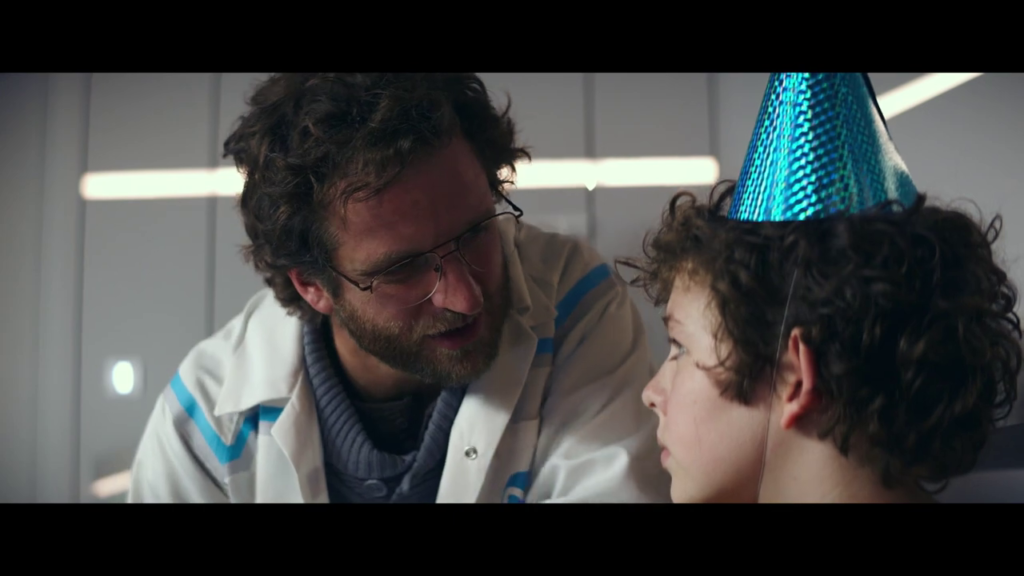
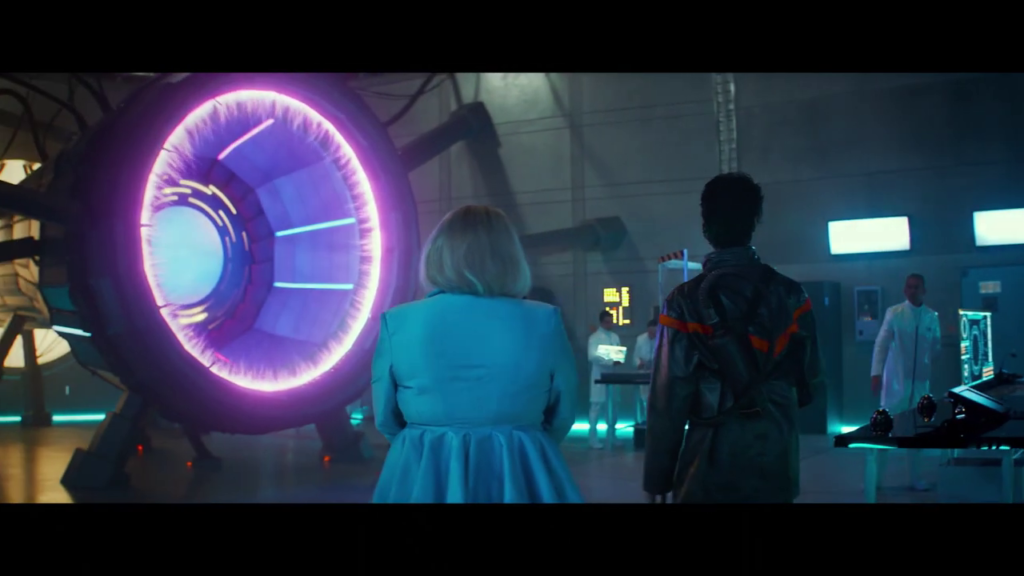
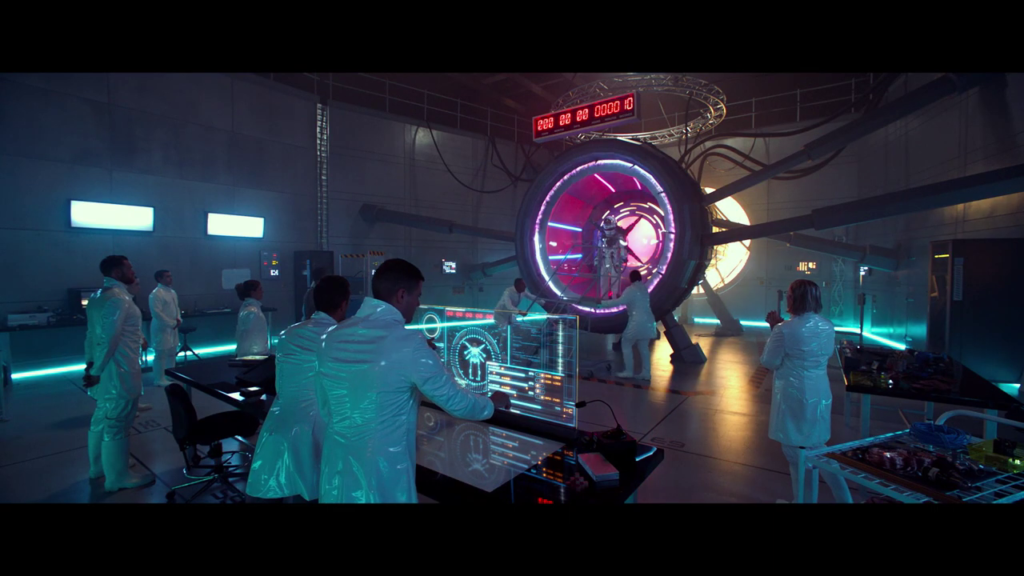
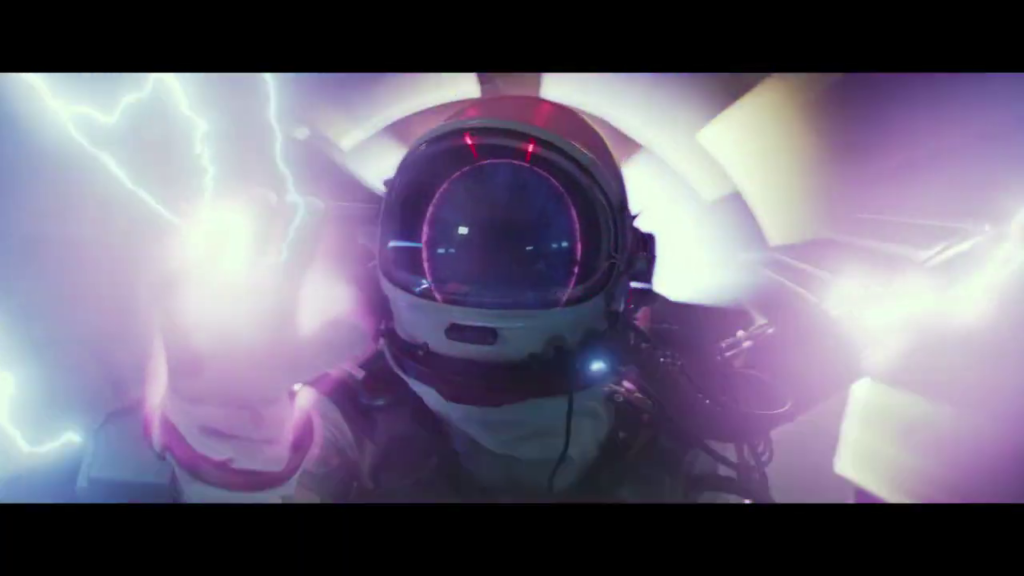
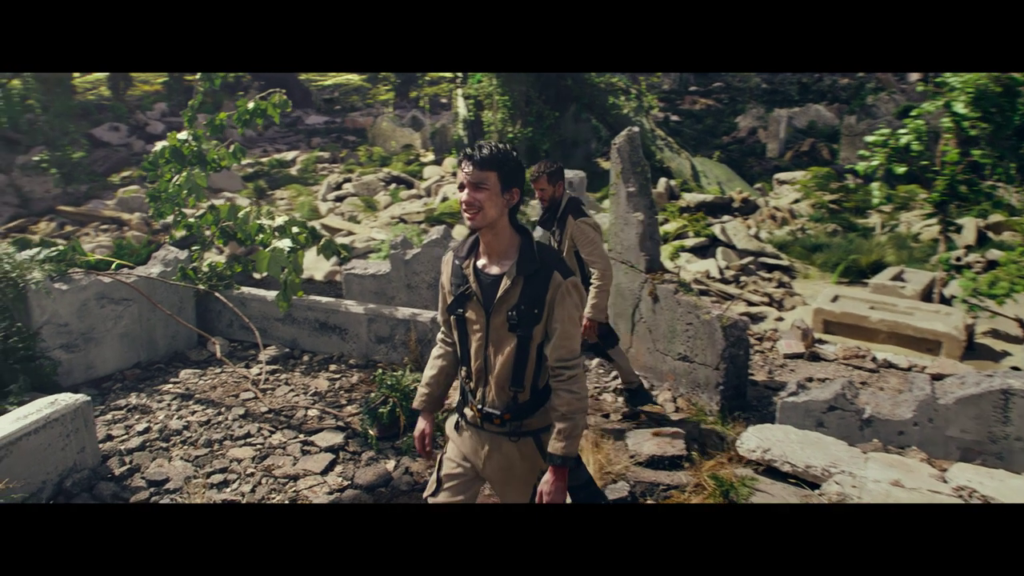
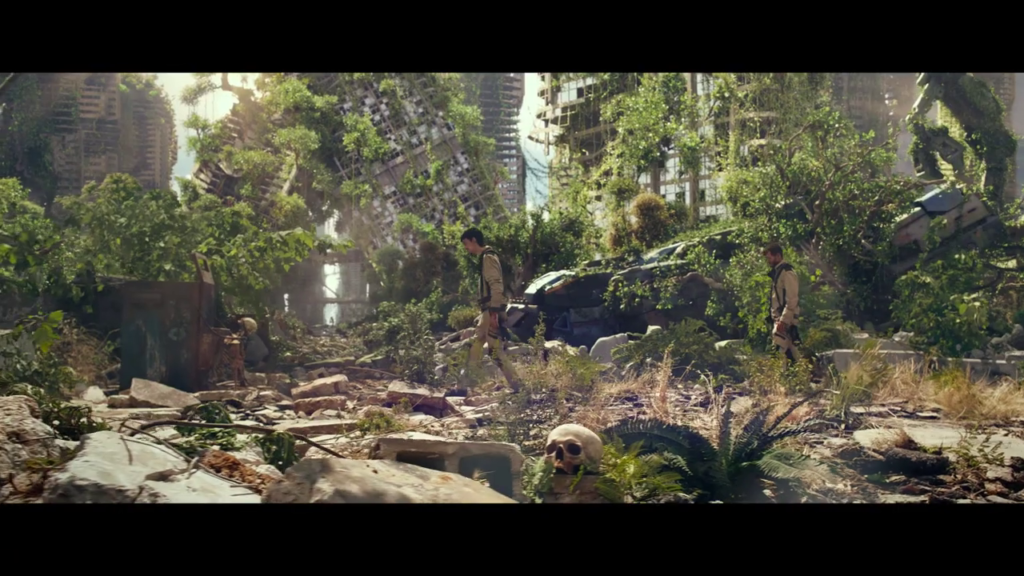
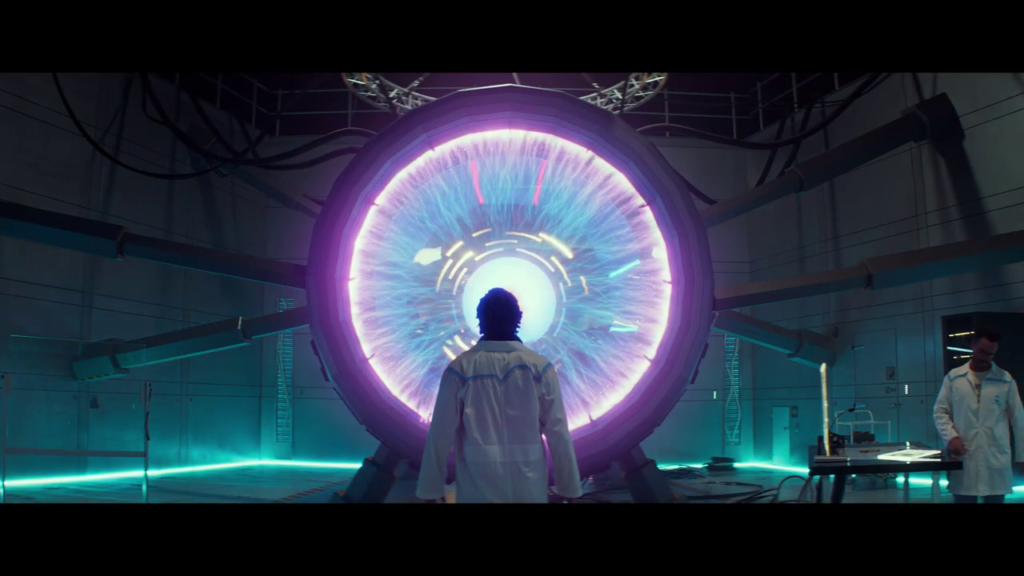
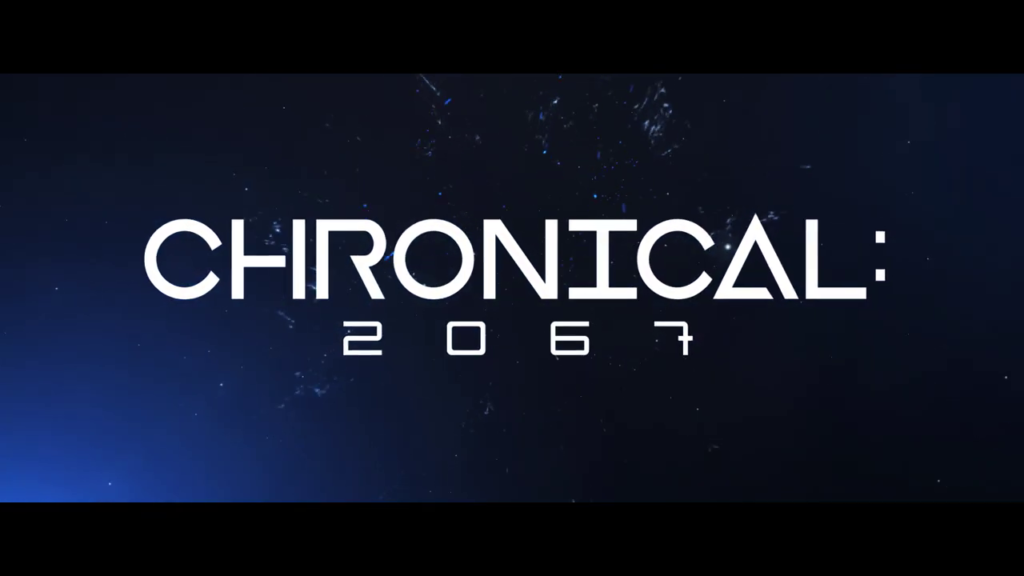
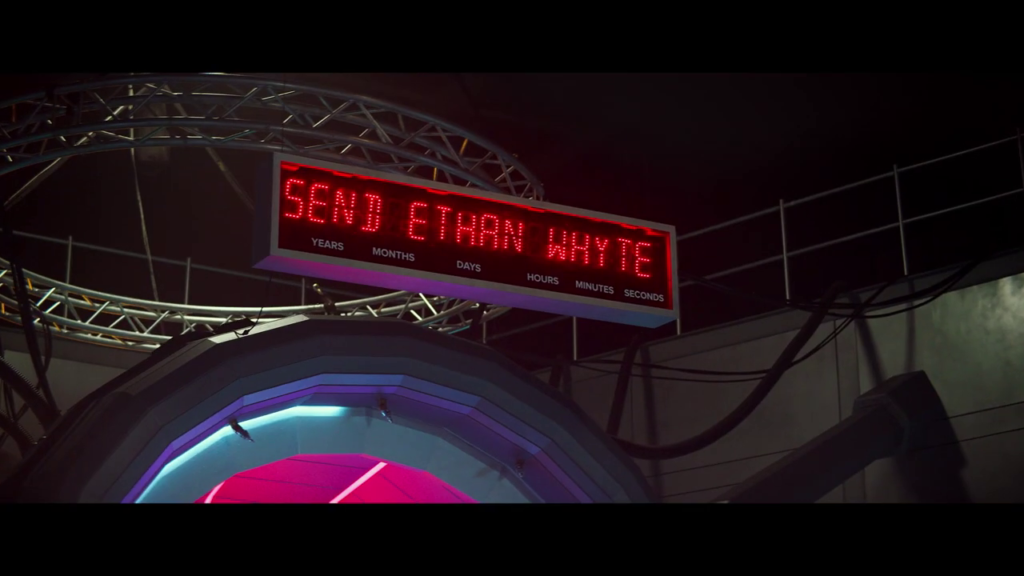
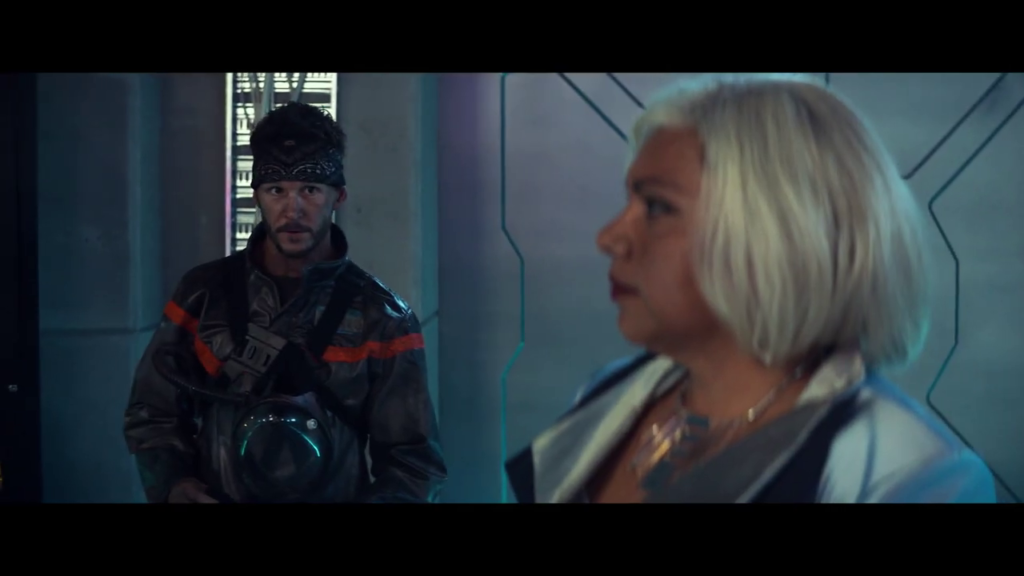
Chronical 2067 (2020)
Film review #564
Director: Seth Larney
SYNOPSIS: In the year 2067, Earth has suffered an almost complete ecological collapse. Humans survive only using synthetic oxygen, which has a side effect of making people sick. The only hope seems to be a top secret project by Chronicorp: a time machine that can travel into the future, where there is hope a cure can be found. However, the time machine has sent only one message through since it was activated: “Send Ethan Whyte”…
THOUGHTS/ANALYSIS: Chronical 2067 is a 2020 Australian sci-fi film. It is set in the year 2067, where Earth has undergone complete ecological collapse, and all plant-life has been wiped out. Humans only survives by breathing synthetic oxygen, which in turn gives them a deadly disease they call “The Sickness.” Ethan Whyte, a lowly technician, is called to Chronicorp headquarters where he is offered a job that apparently will save humanity: to travel to the future in a time machine to find a cure for The Sickness and bring it back, as the time machine has only sent a message from the computer that stated “send Ethan Whyte.” Since this indicates that someone is alive at the other end, it is assumed that the future has a cure for the sickness, since someone would have had to have sent the message, and Ethan agrees to go because his wife also has the sickness. The film attempts to create a lot of suspense and mystery surrounding the fate of the world, the message sent, and the disappearance of Ethan’s Father, but the main problem is it never really comes together, and neither are the situations Ethan is thrown into ever filled with that atmosphere. It’s fairly obvious that there is something more going on than has been revealed, but it never really builds up that mystery and suspense to keep the audience guessing. Typical story elements such as an estranged relationship with a Father, for example, further cement a feeling that you’ve seen it all before.
The characters are also fairly typical, and even though there’s an attempt to build them up, there’s not enough of a hook to make them solid pillars to the film. Coupled with some flat acting here and there, it overall just feels like it’s difficult to immerse yourself in their world and the setting. There’s some nice visual effects that are able to put you more in the main characters shoes, but there’s never enough to balance out the lows. Overall, there’s not much else to say about Chronical 2067: it presents a fair amount of mystery and a basic amount of intrigue, but never the suspense or drama that it needs to in order to hook a viewer into the mystery. There’s a constant feeling you’ve seen a lot of it before, and done better. It’s not terrible, and there’s some good ideas, but there’s perhaps too many of them, and they never properly cohere into a strong narrative, or the sheer multitude of them just make the characters walking tropes that splinter off every which way, so they too never become individual personalities that can drive forward the story. A classic case of good ideas, bad execution.
